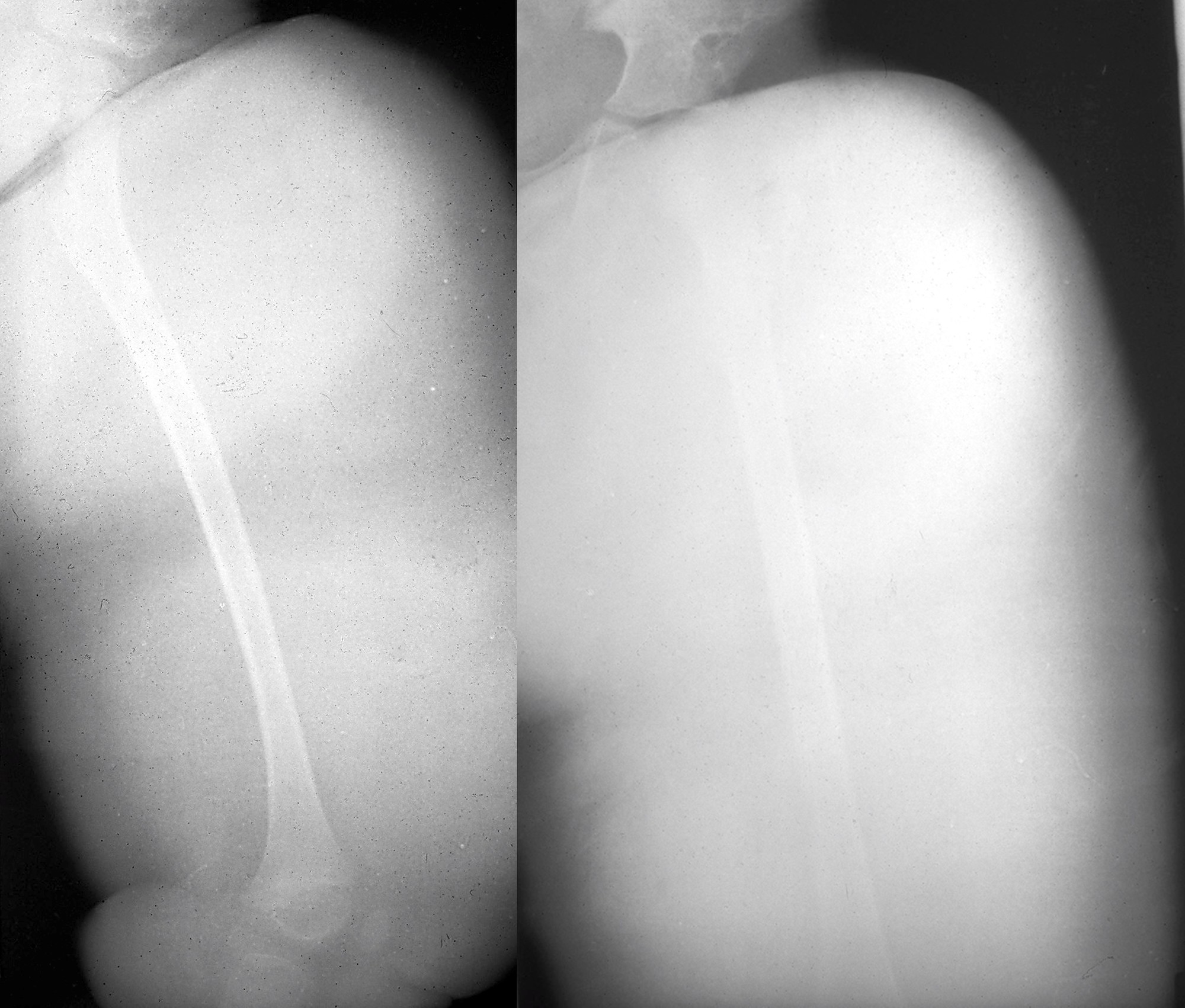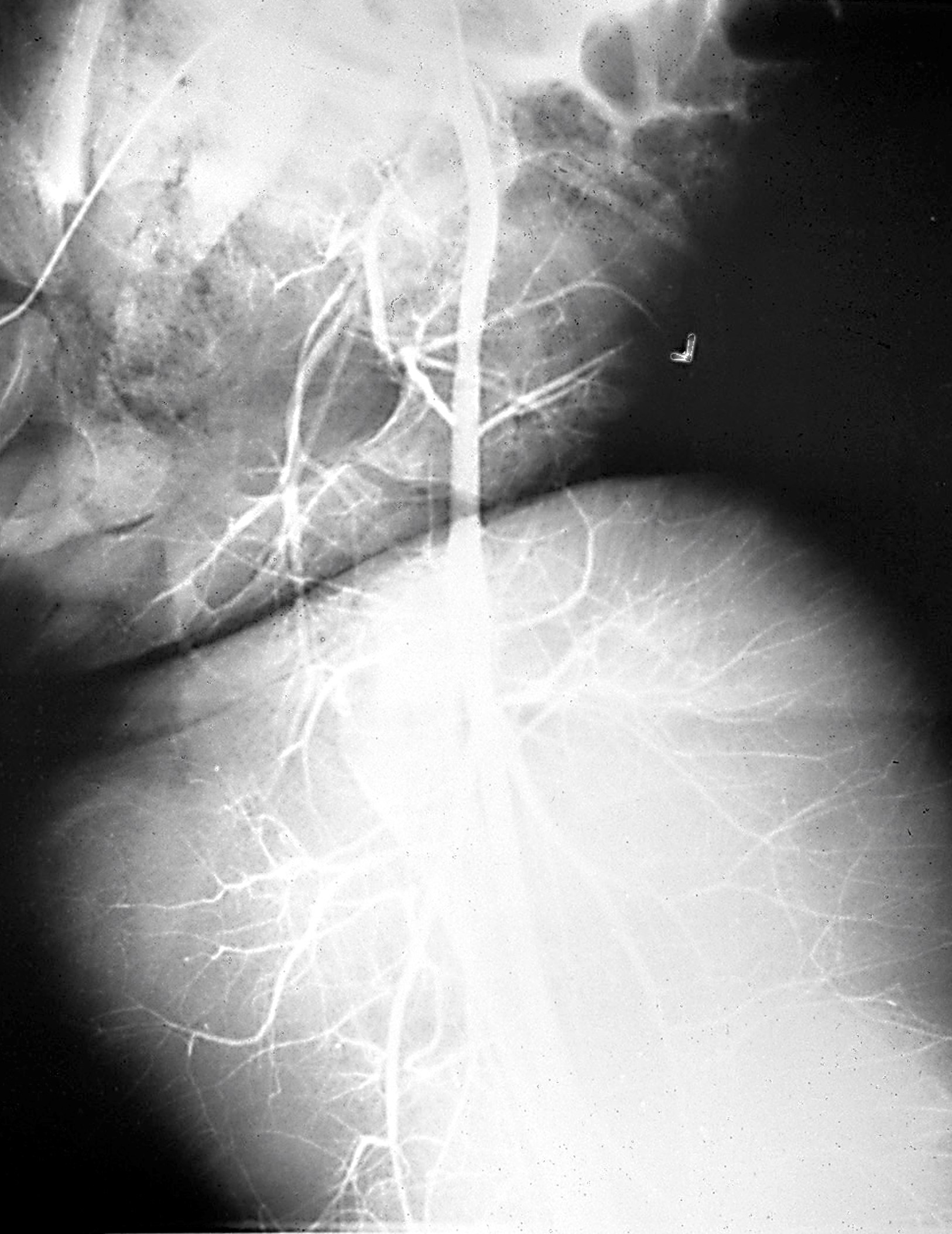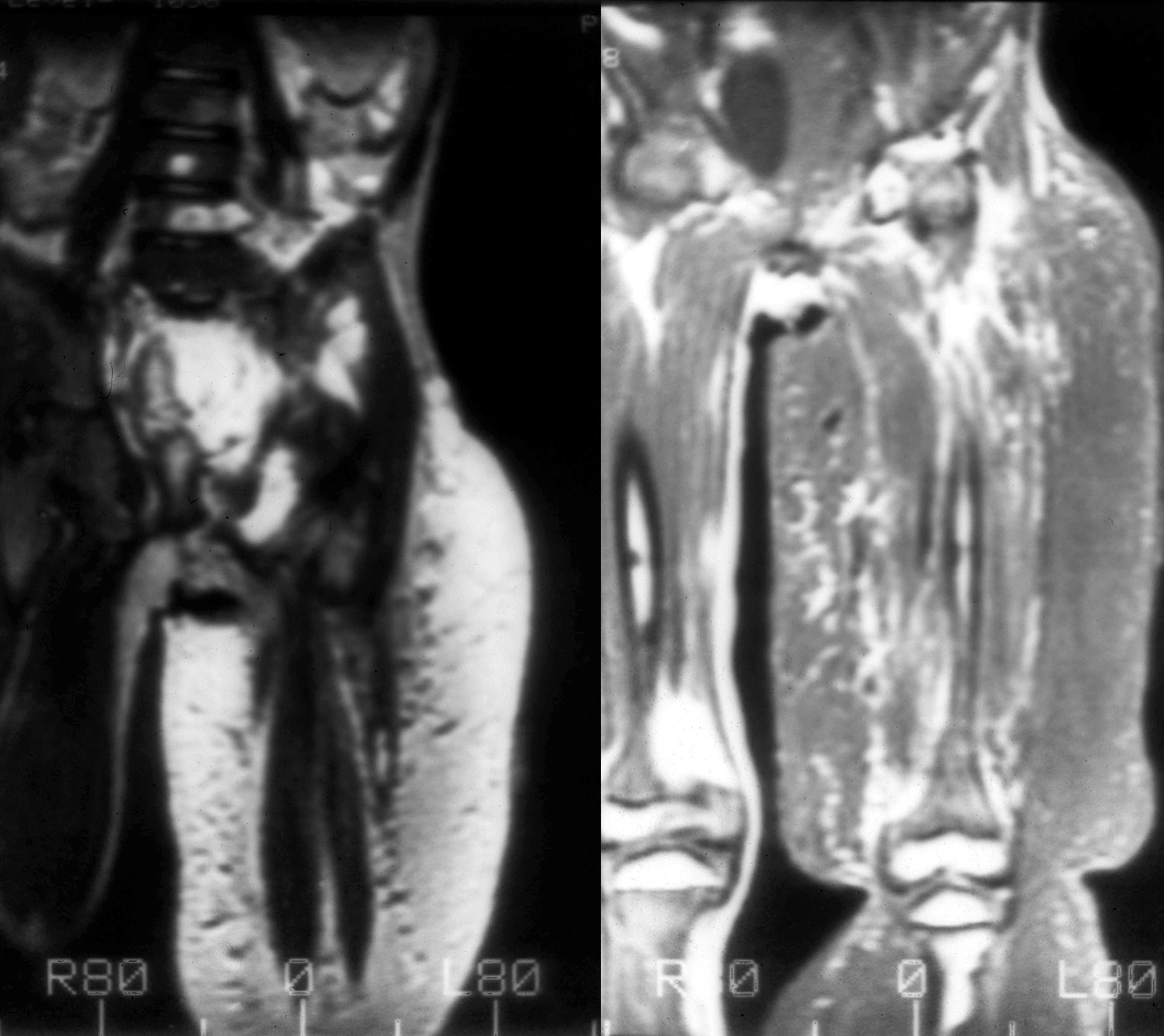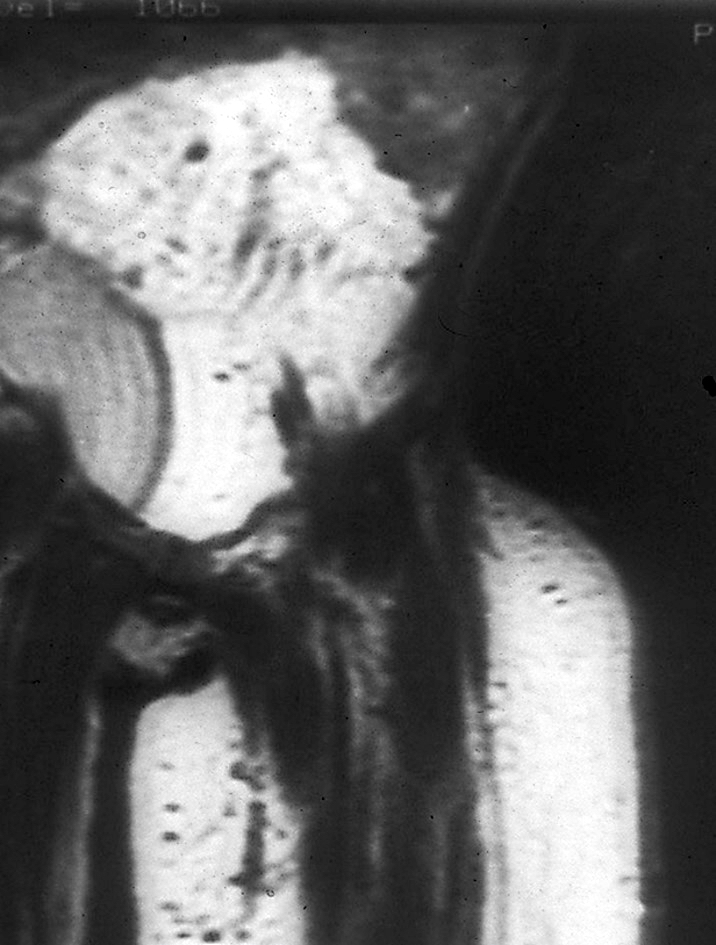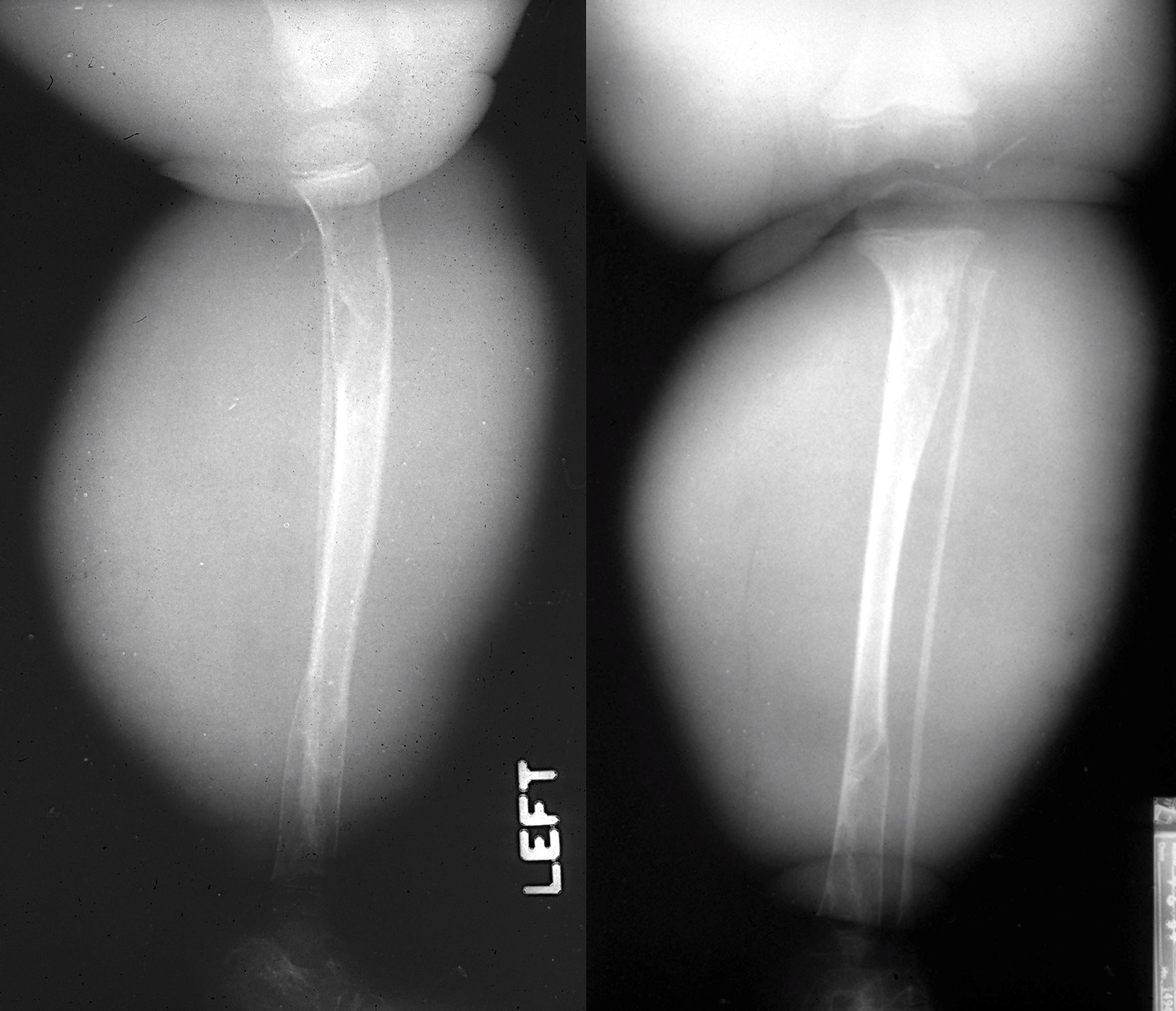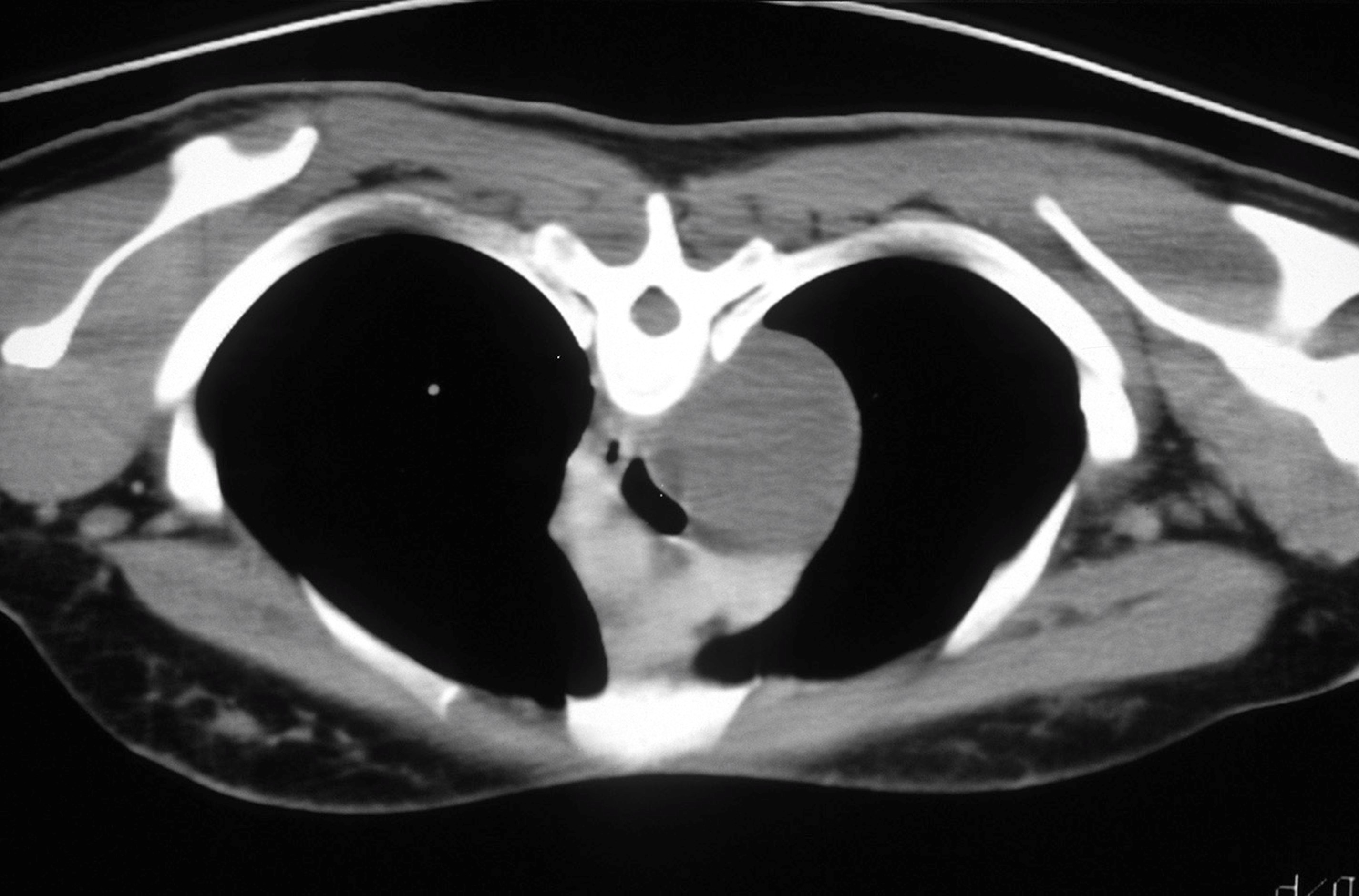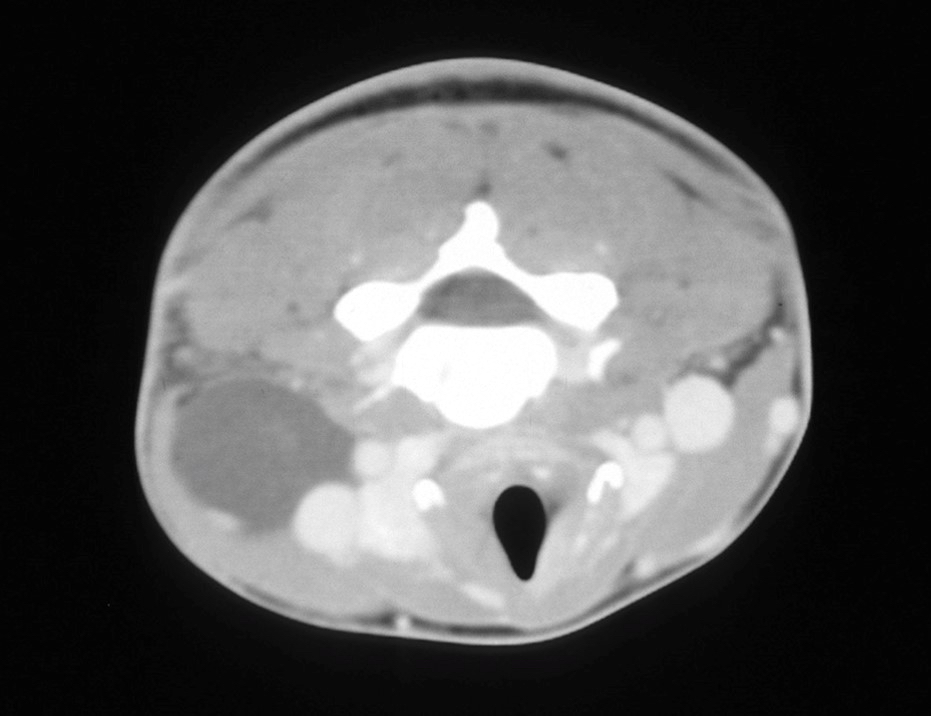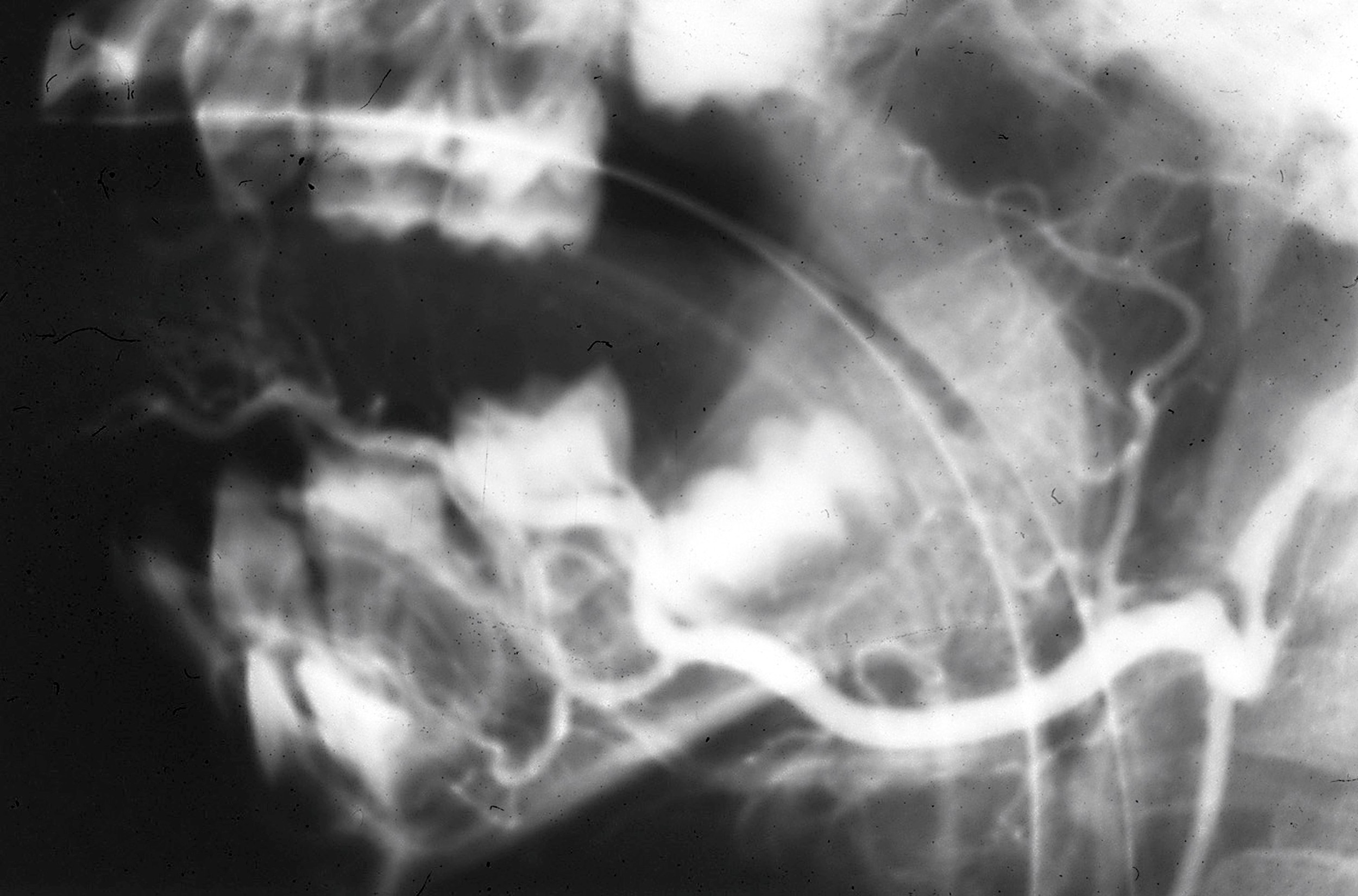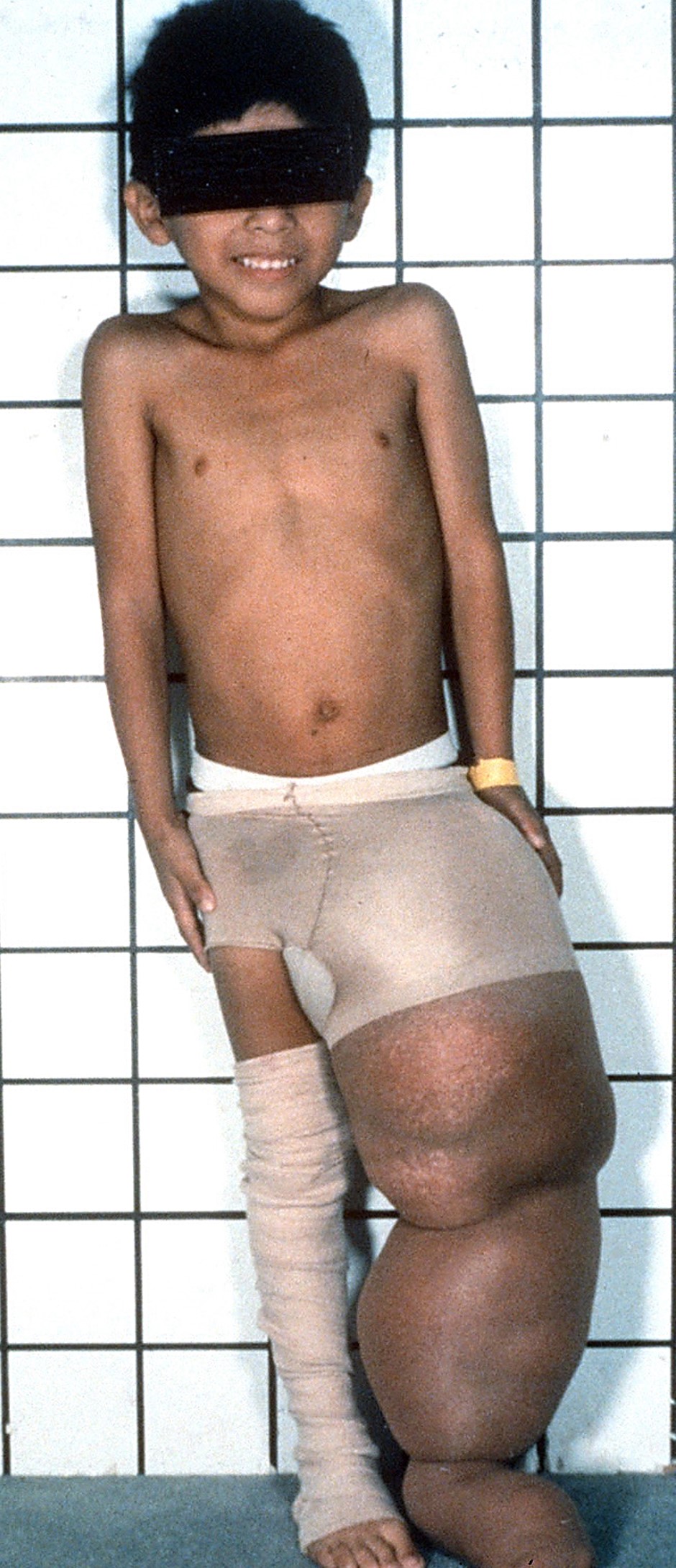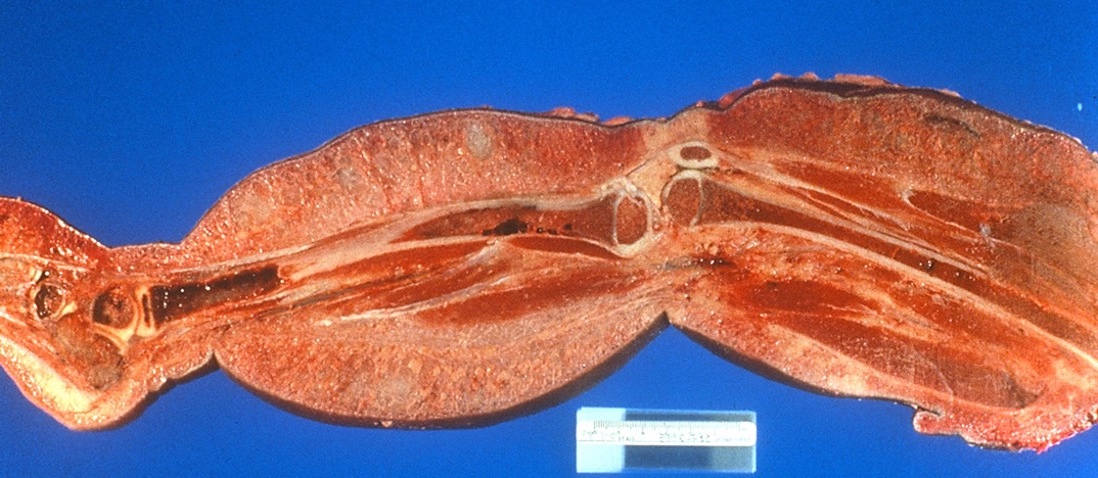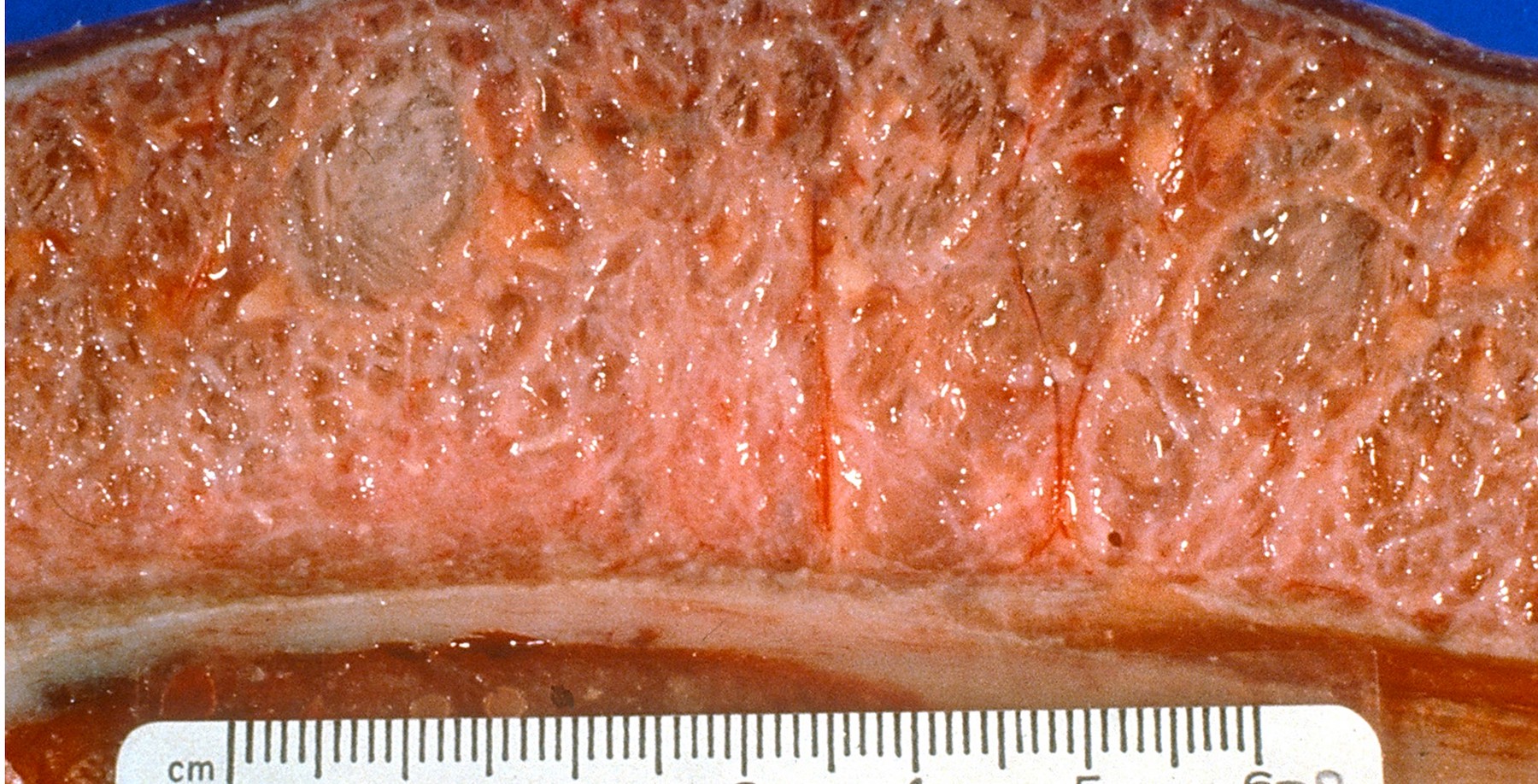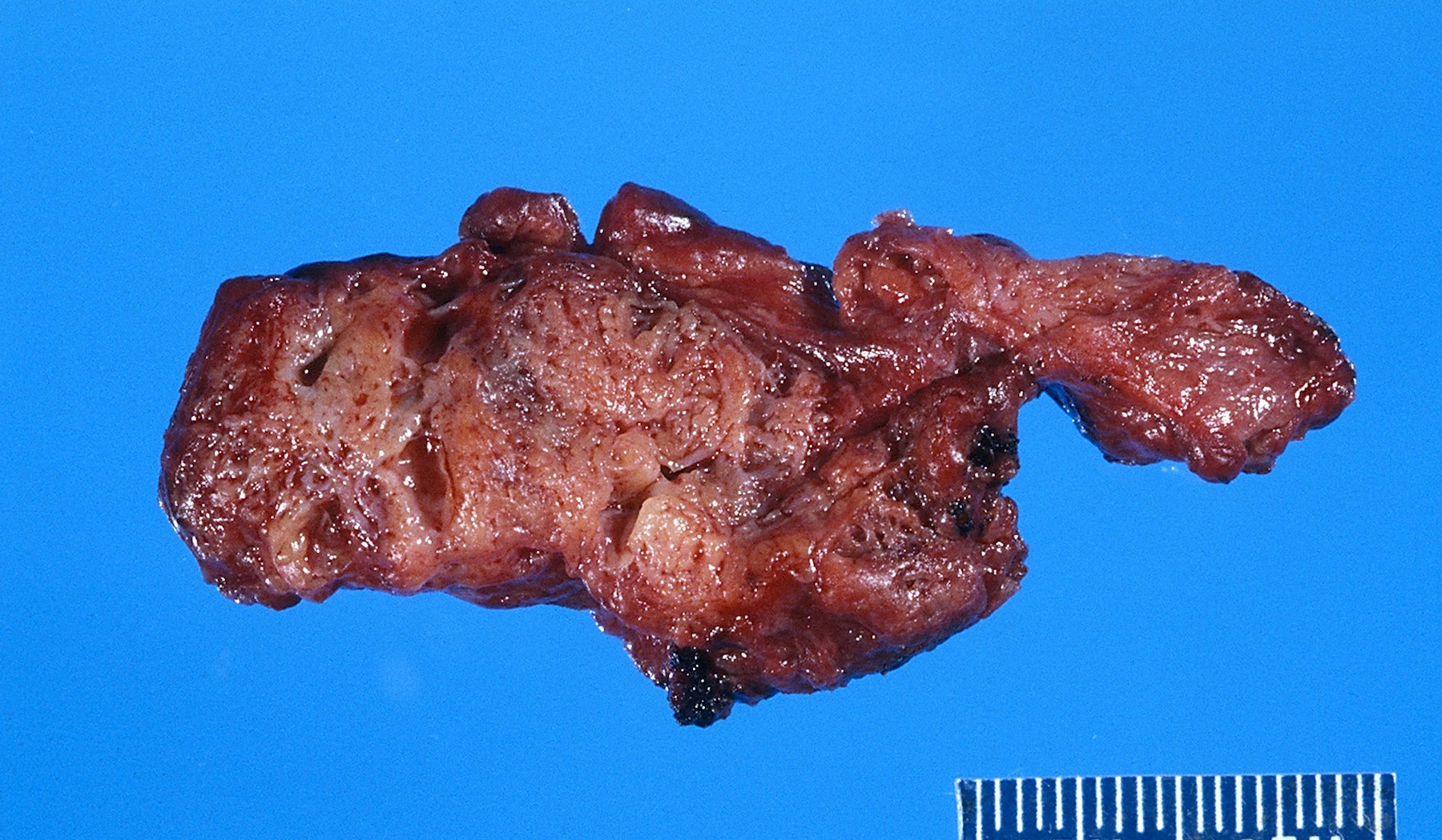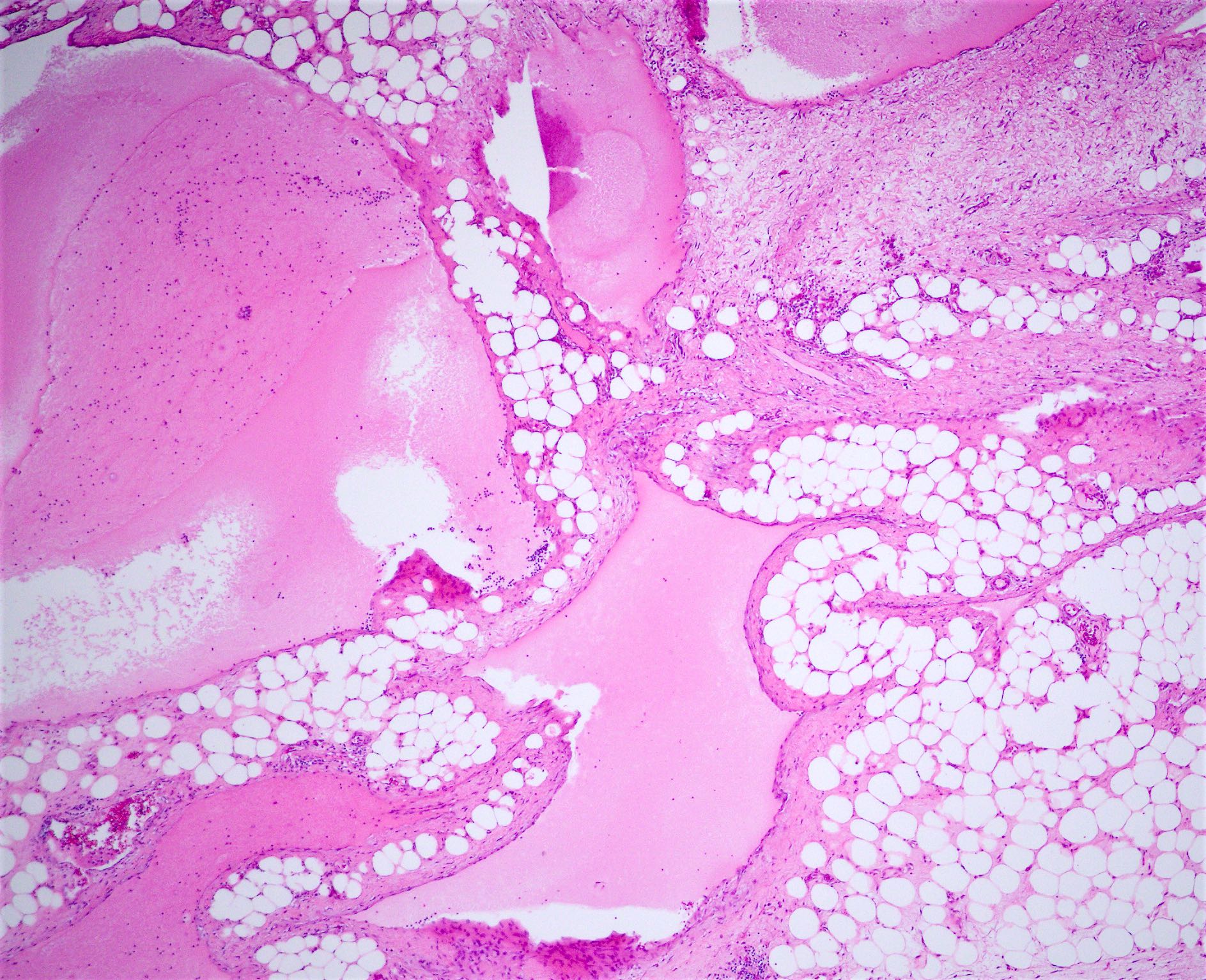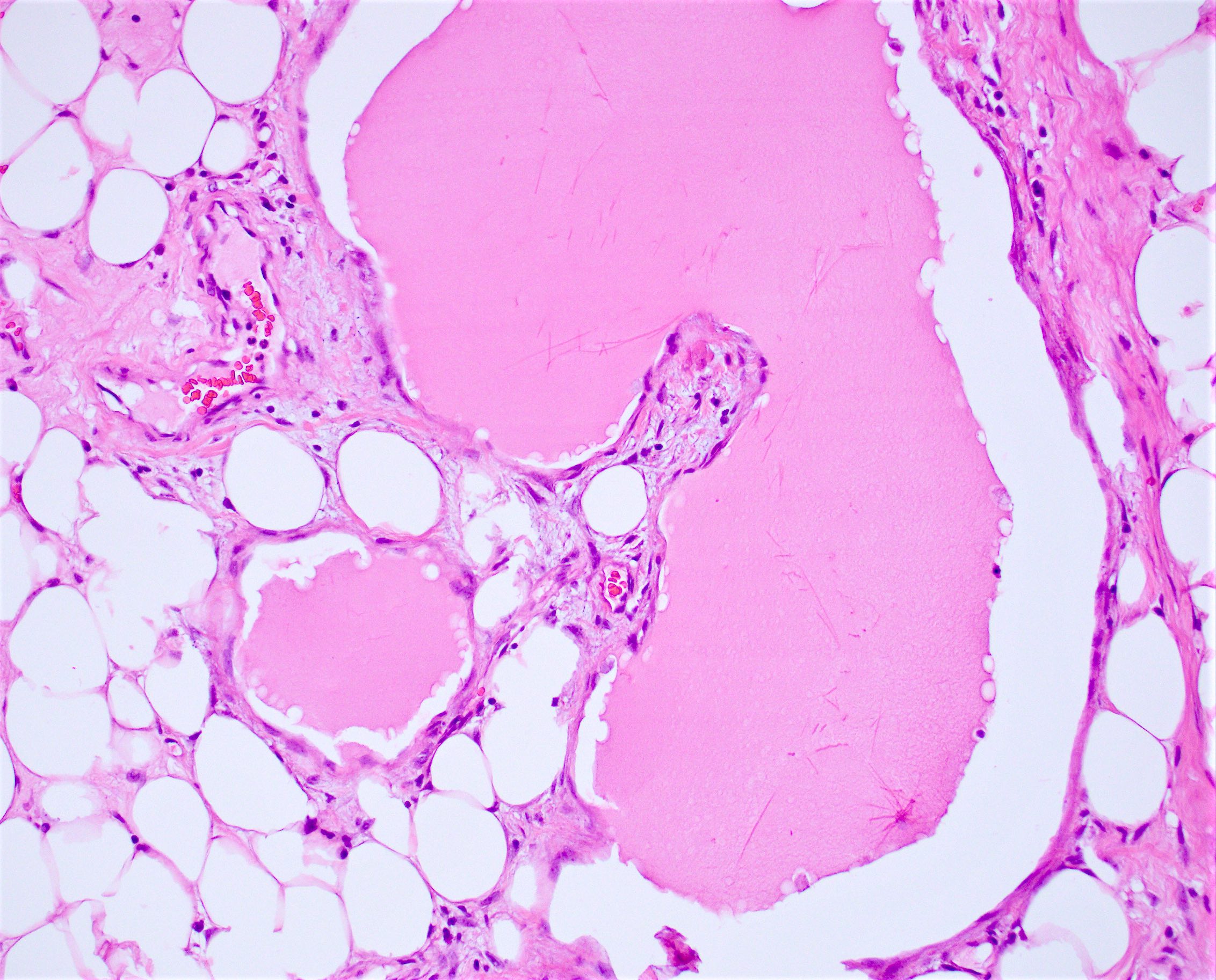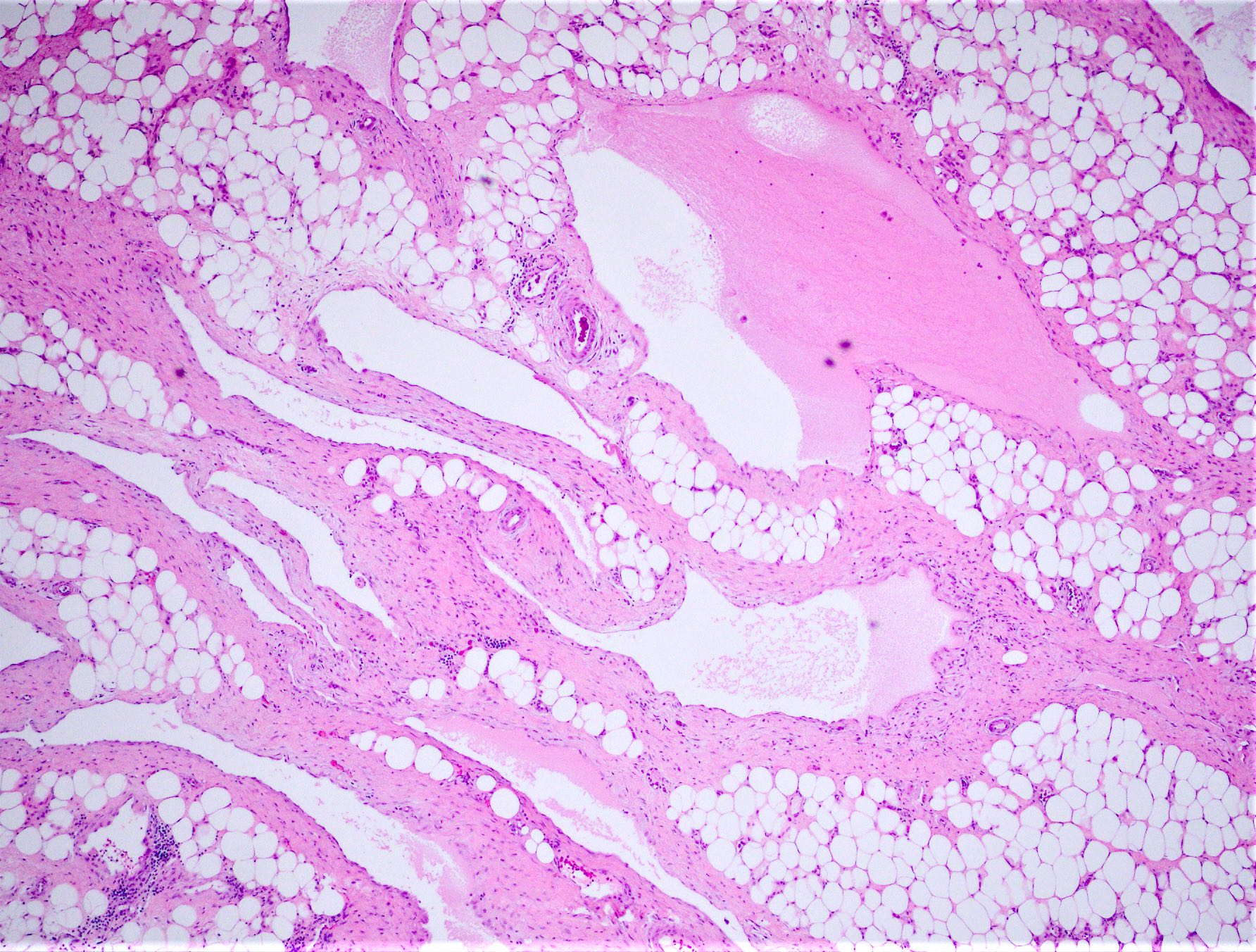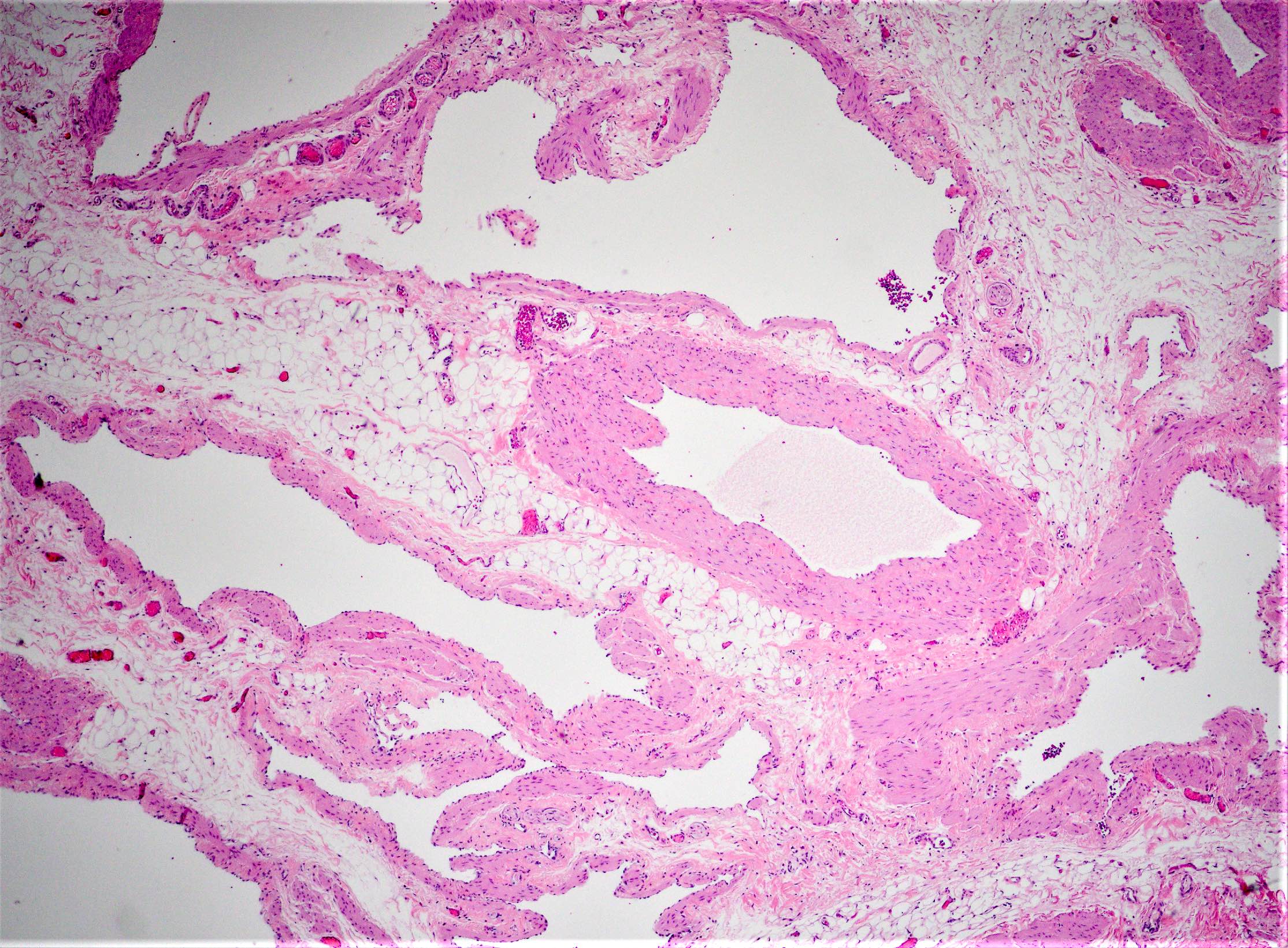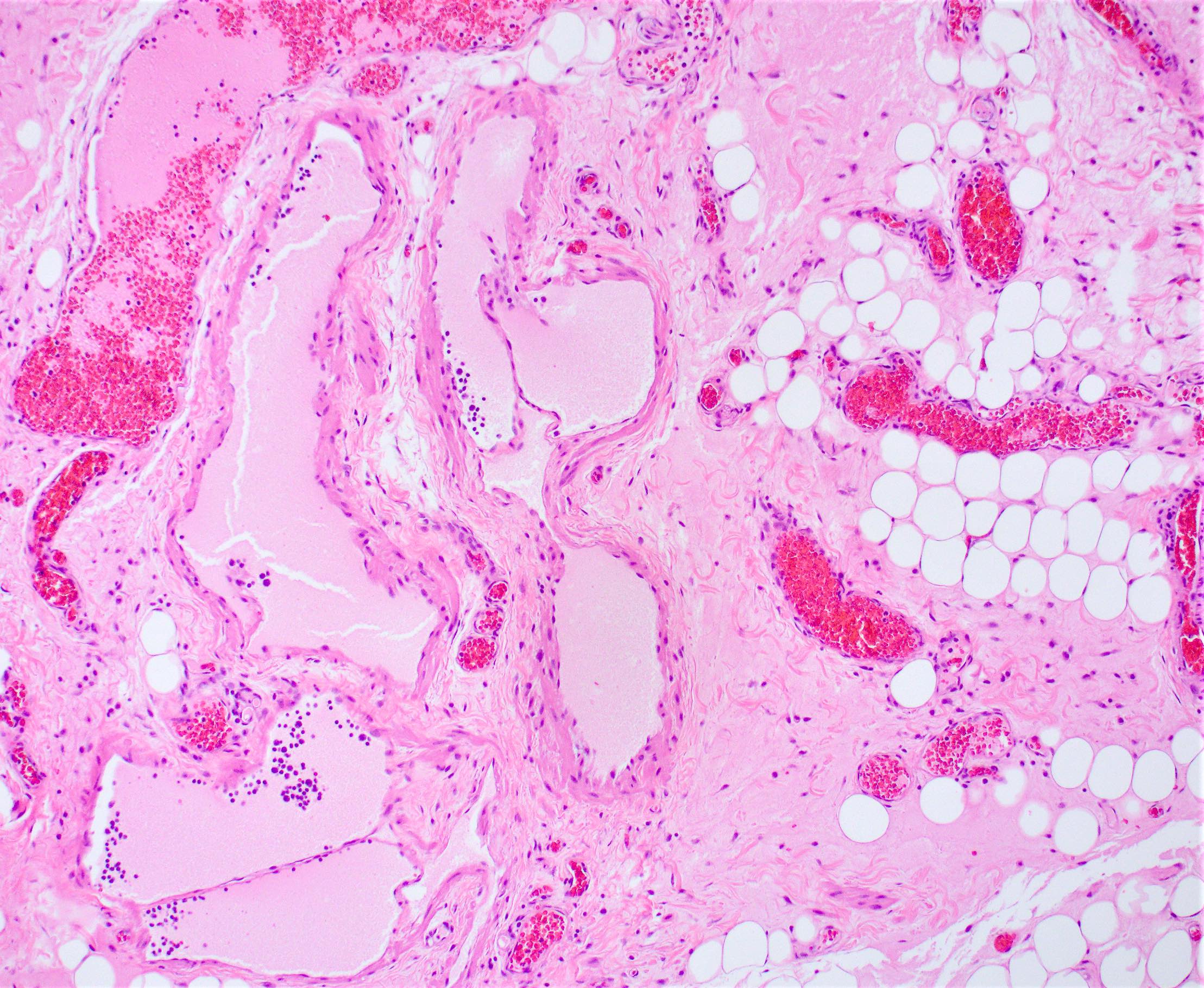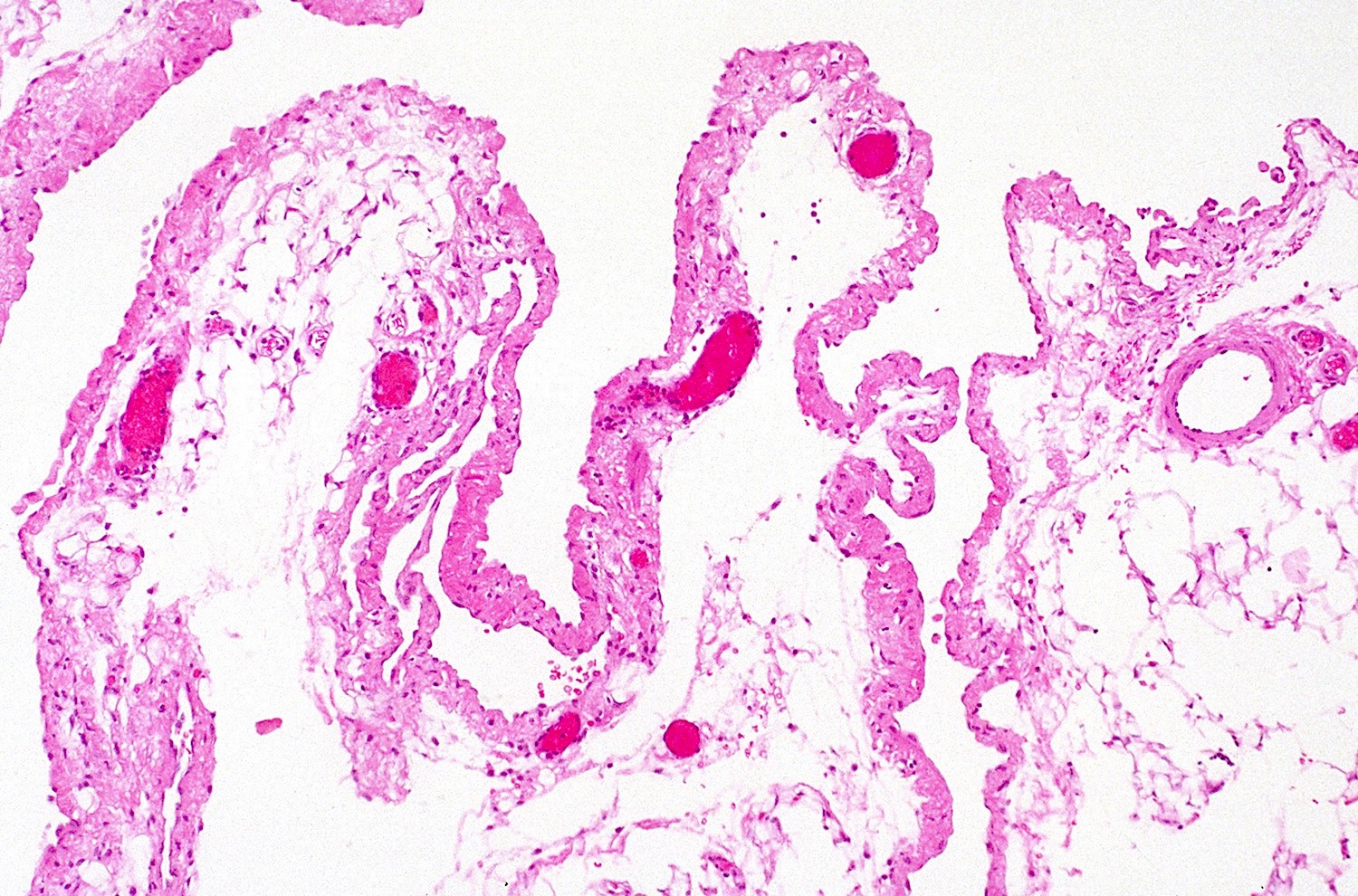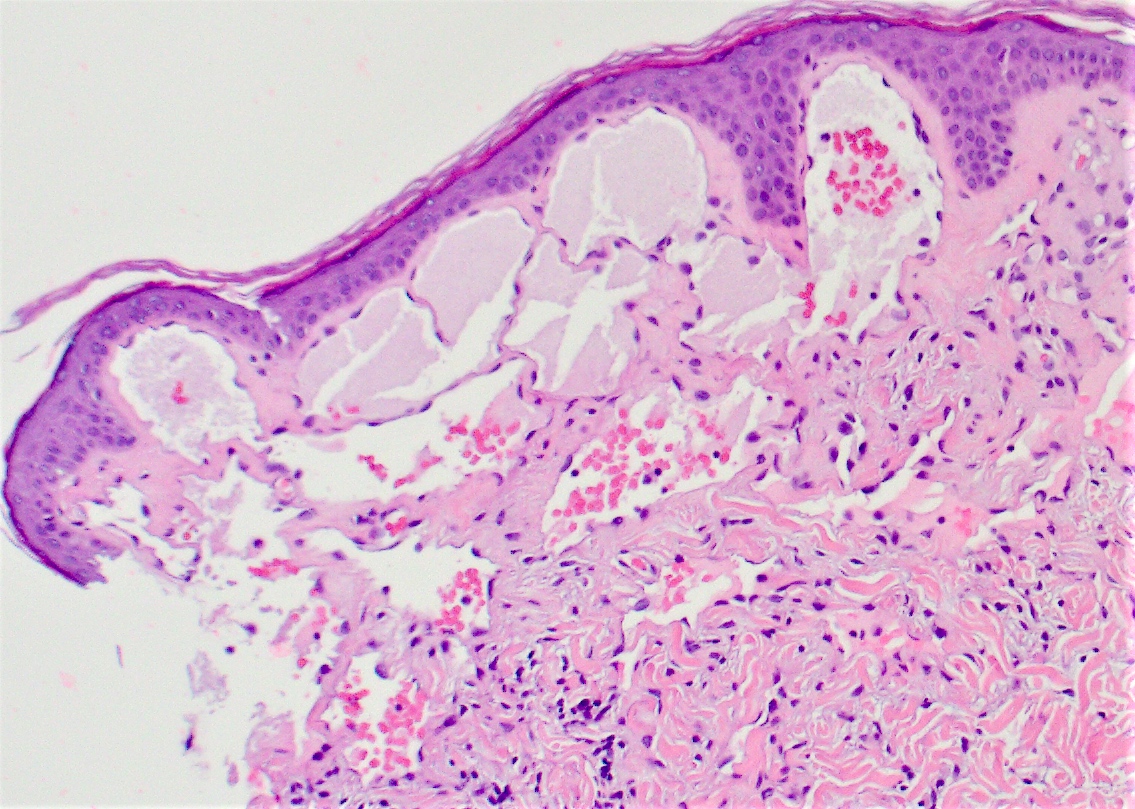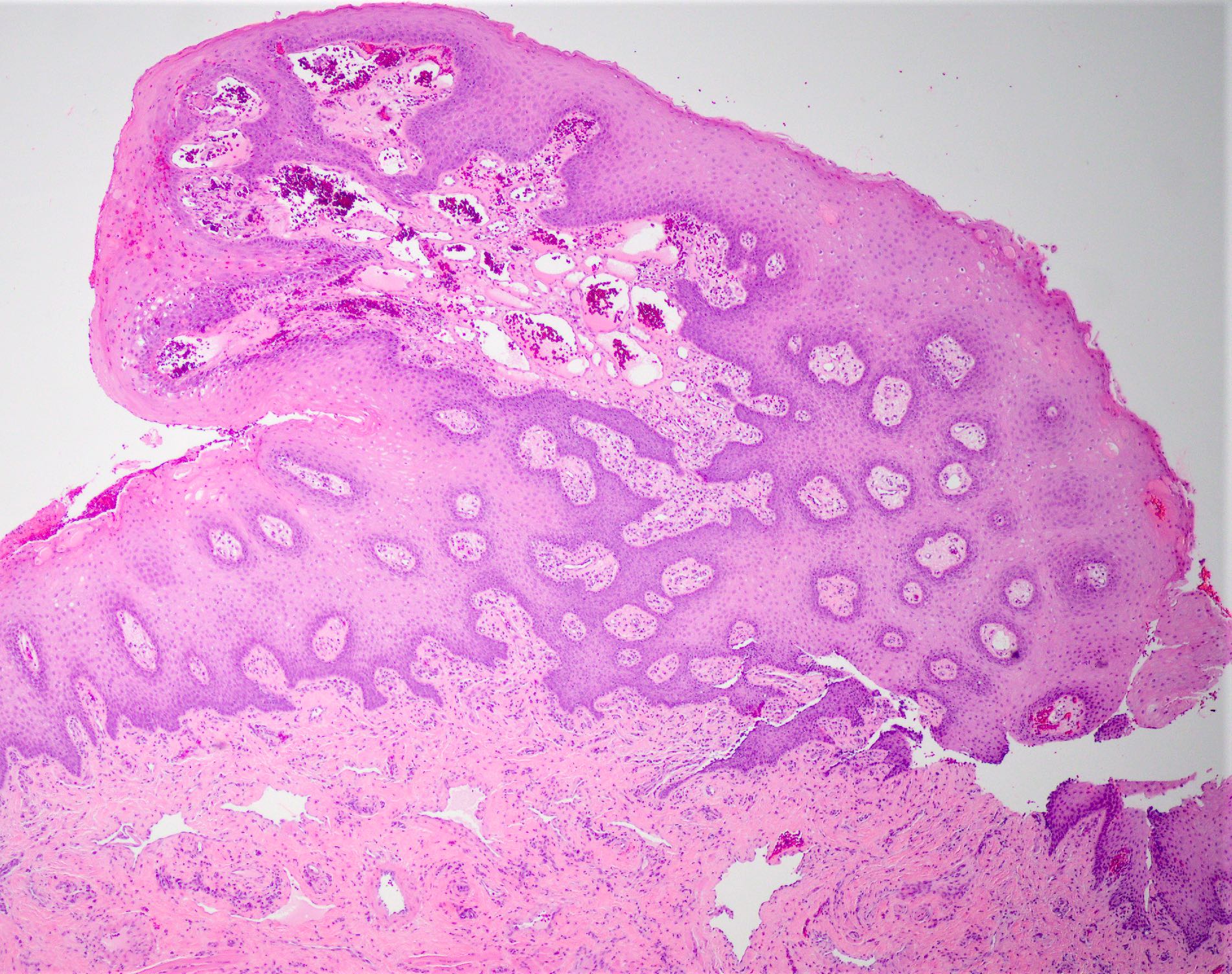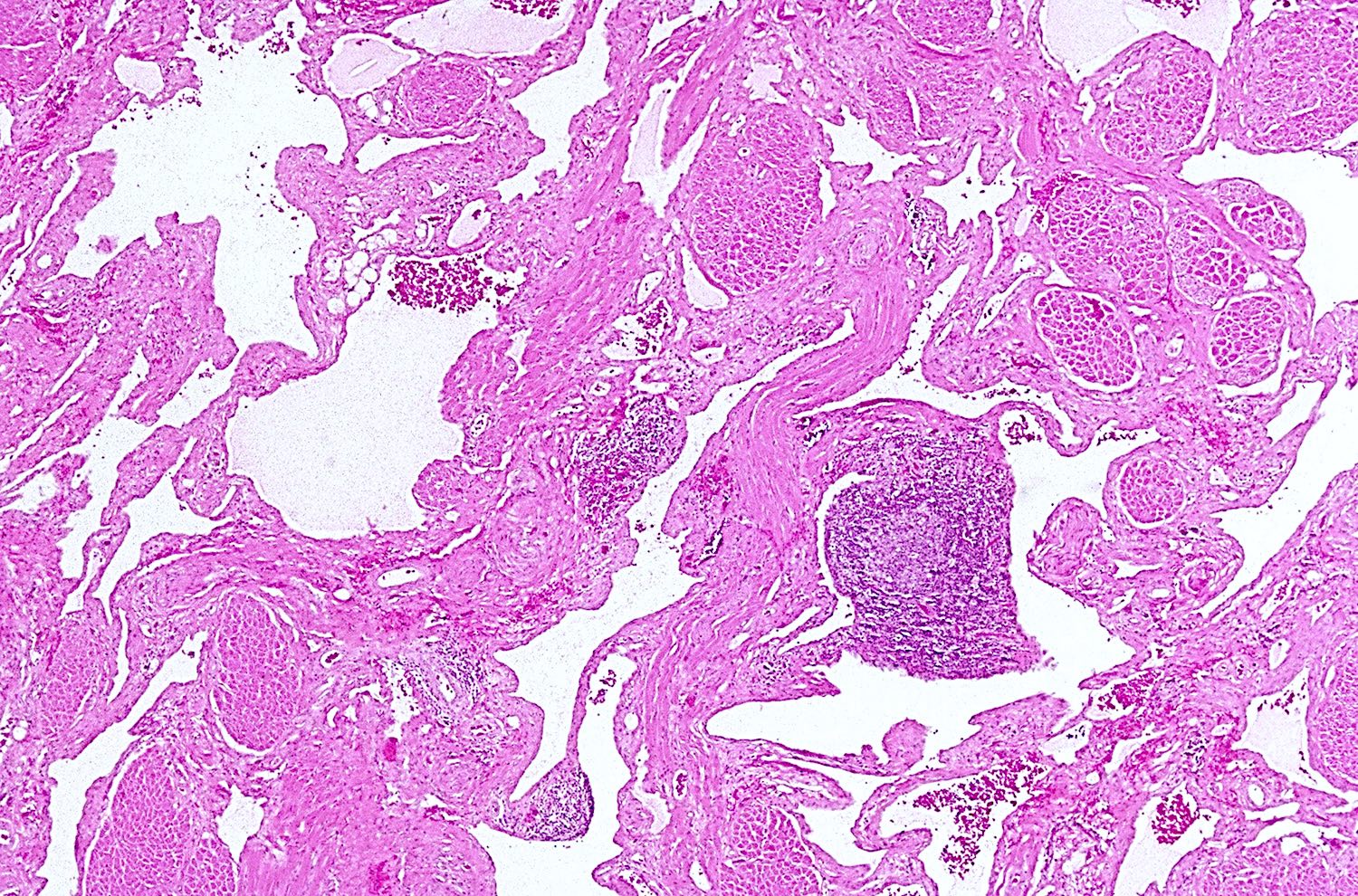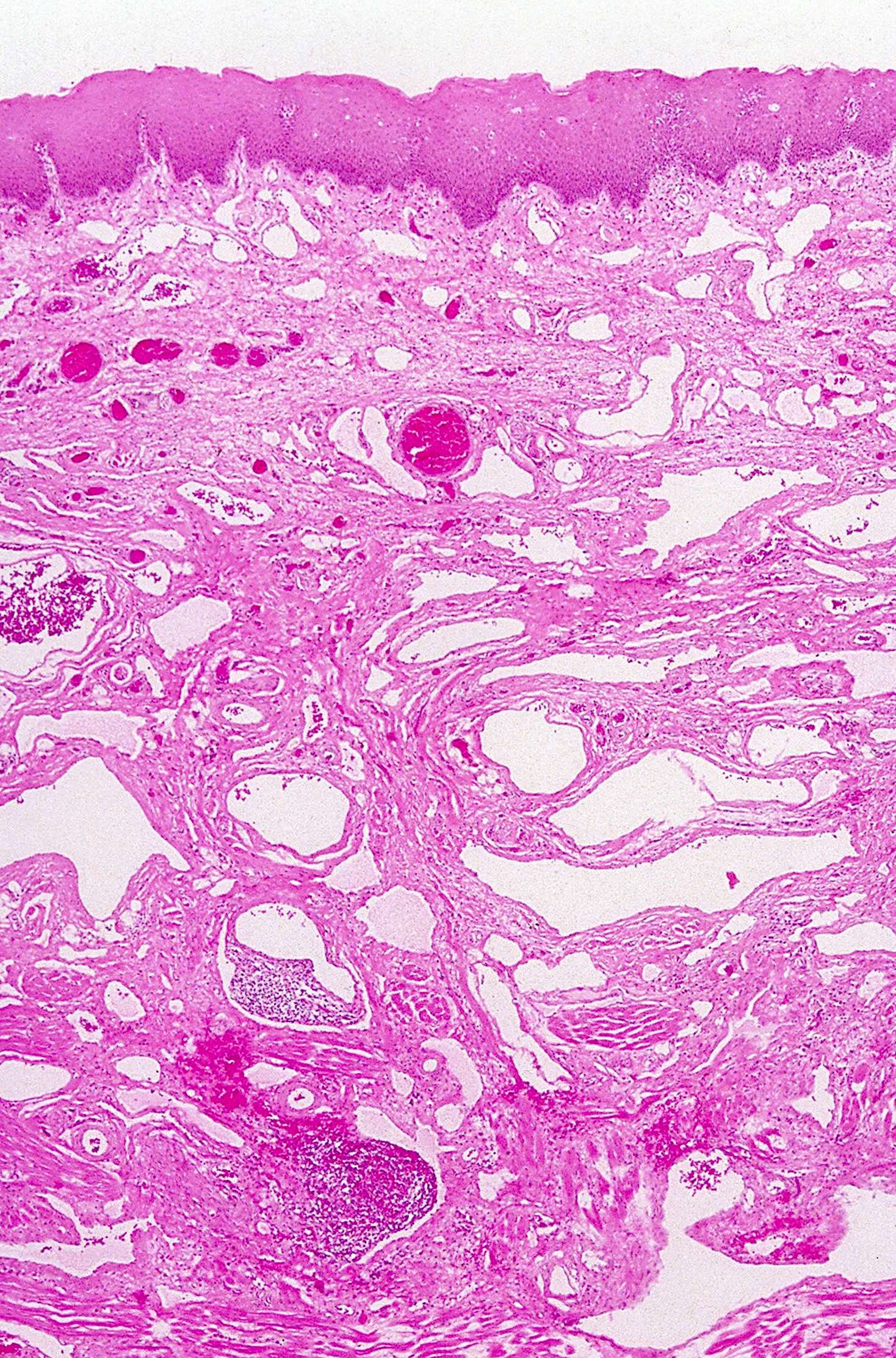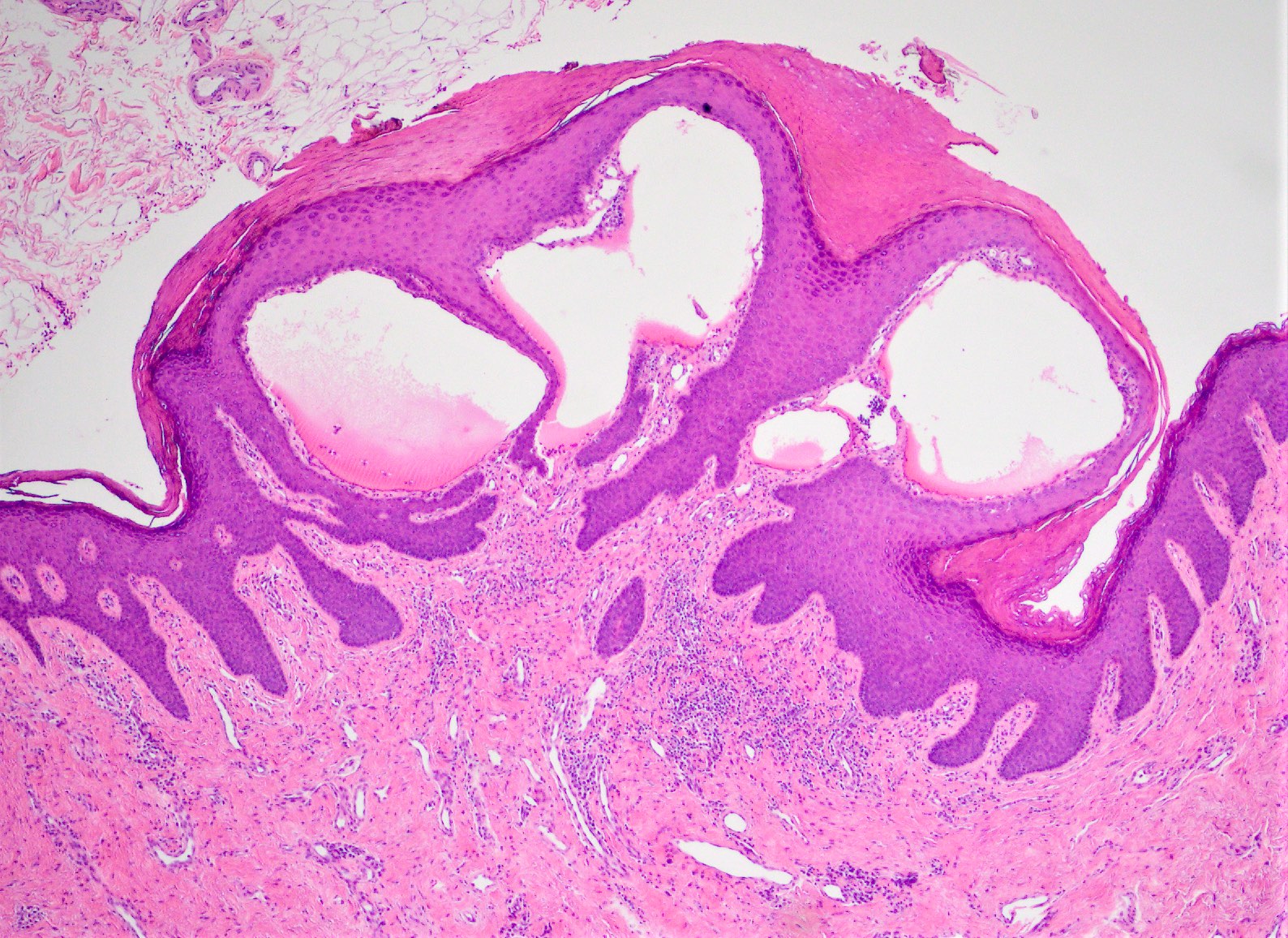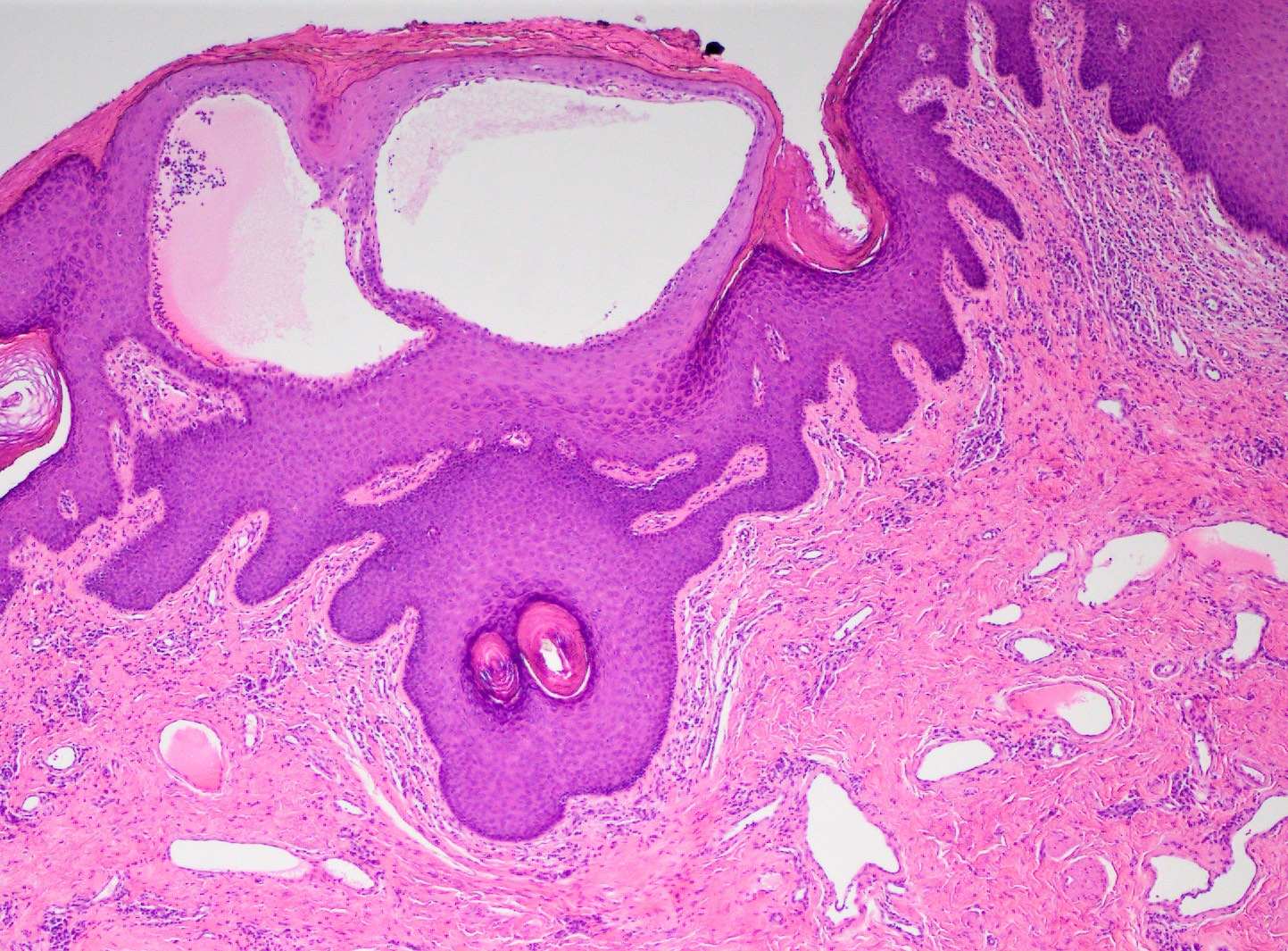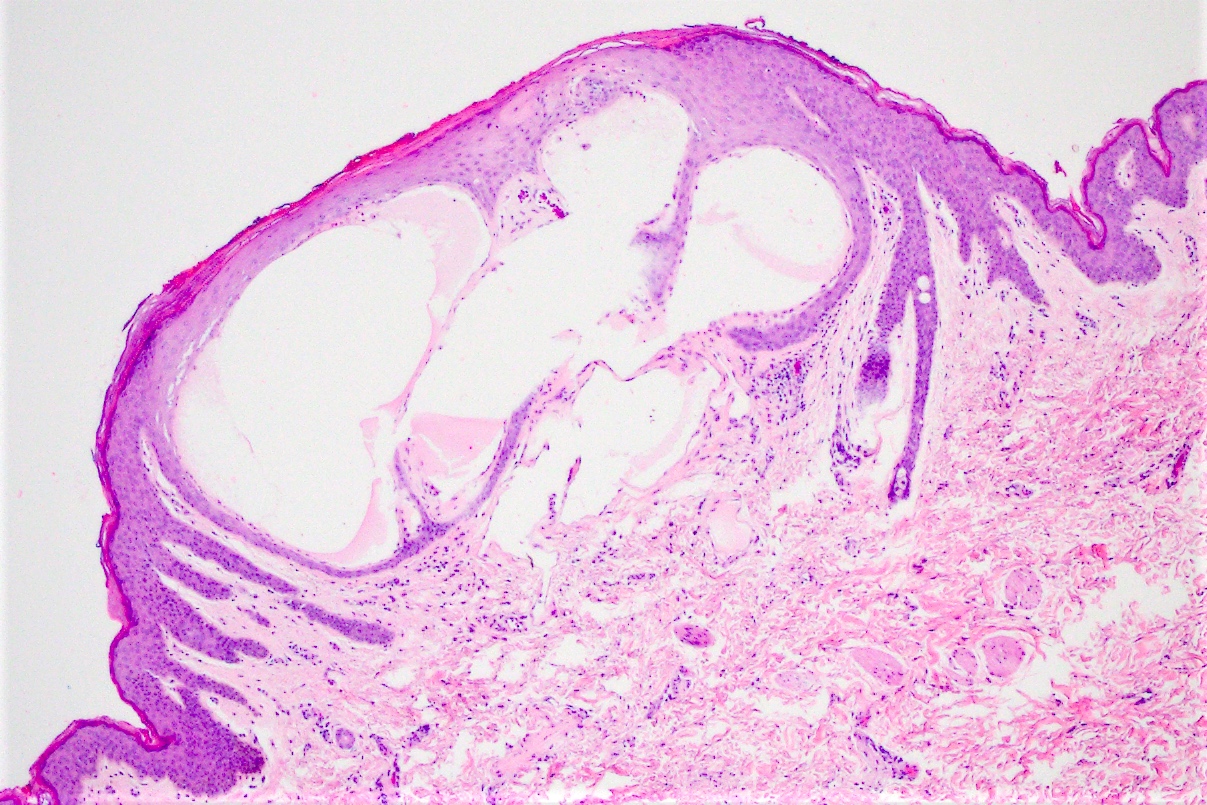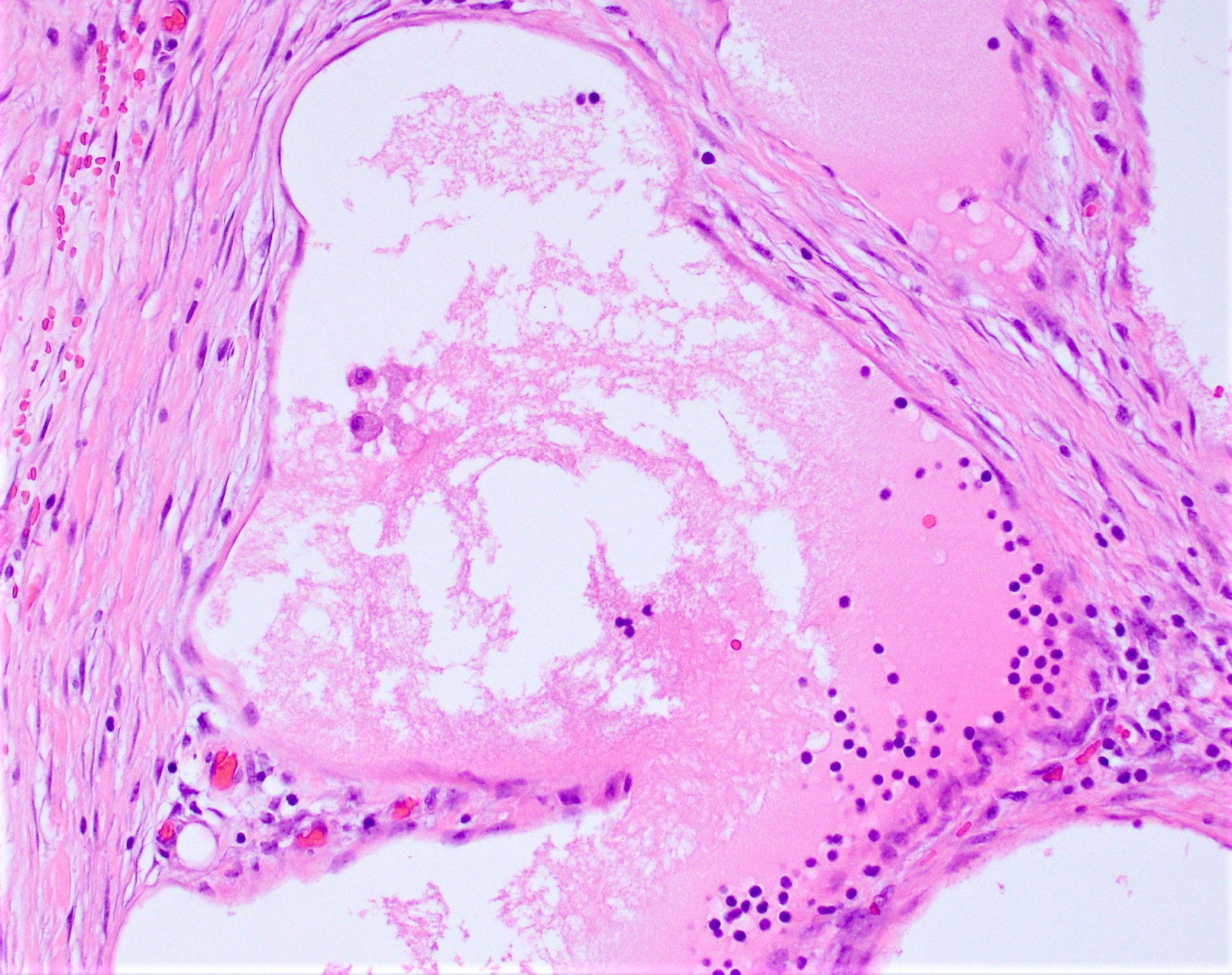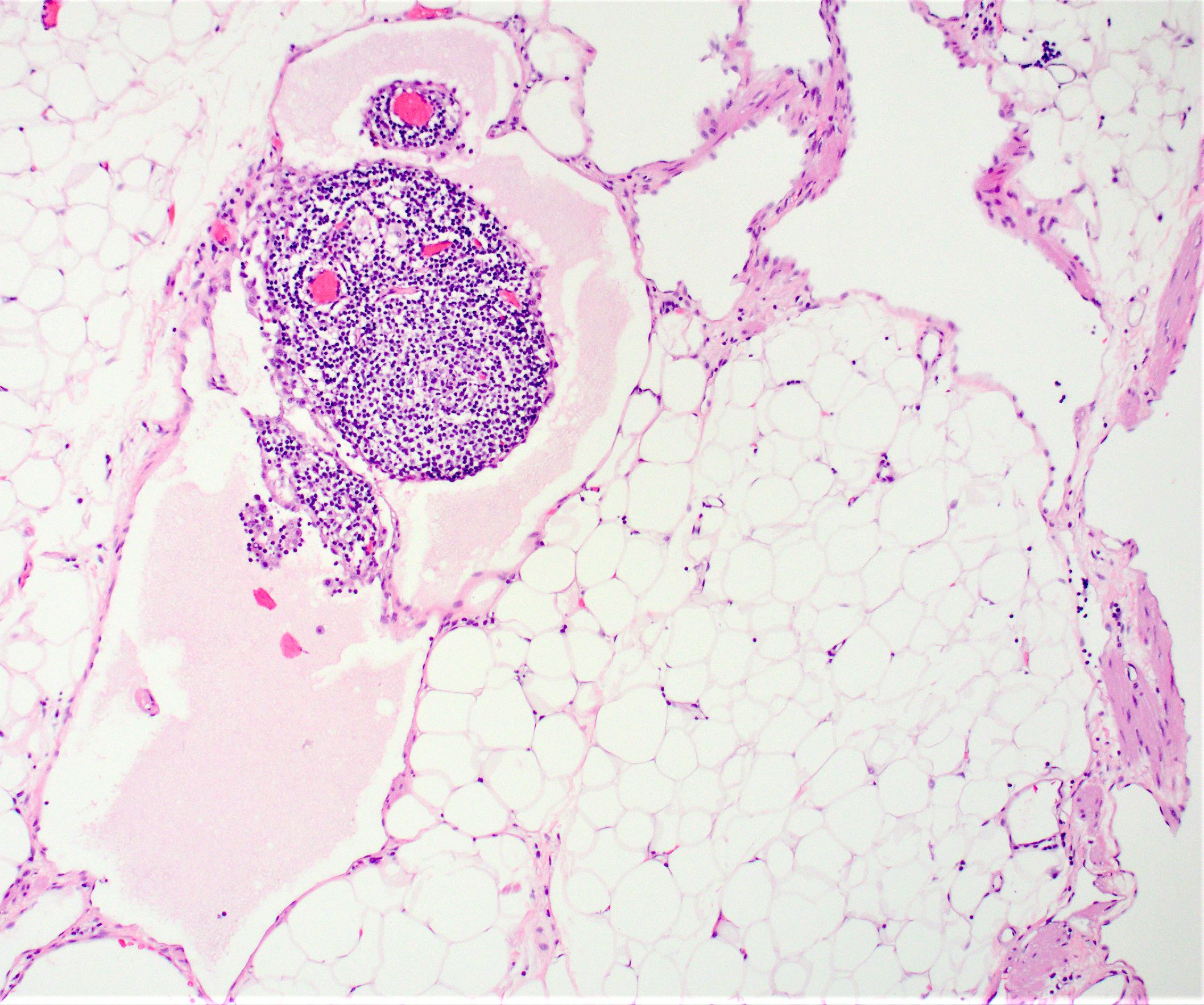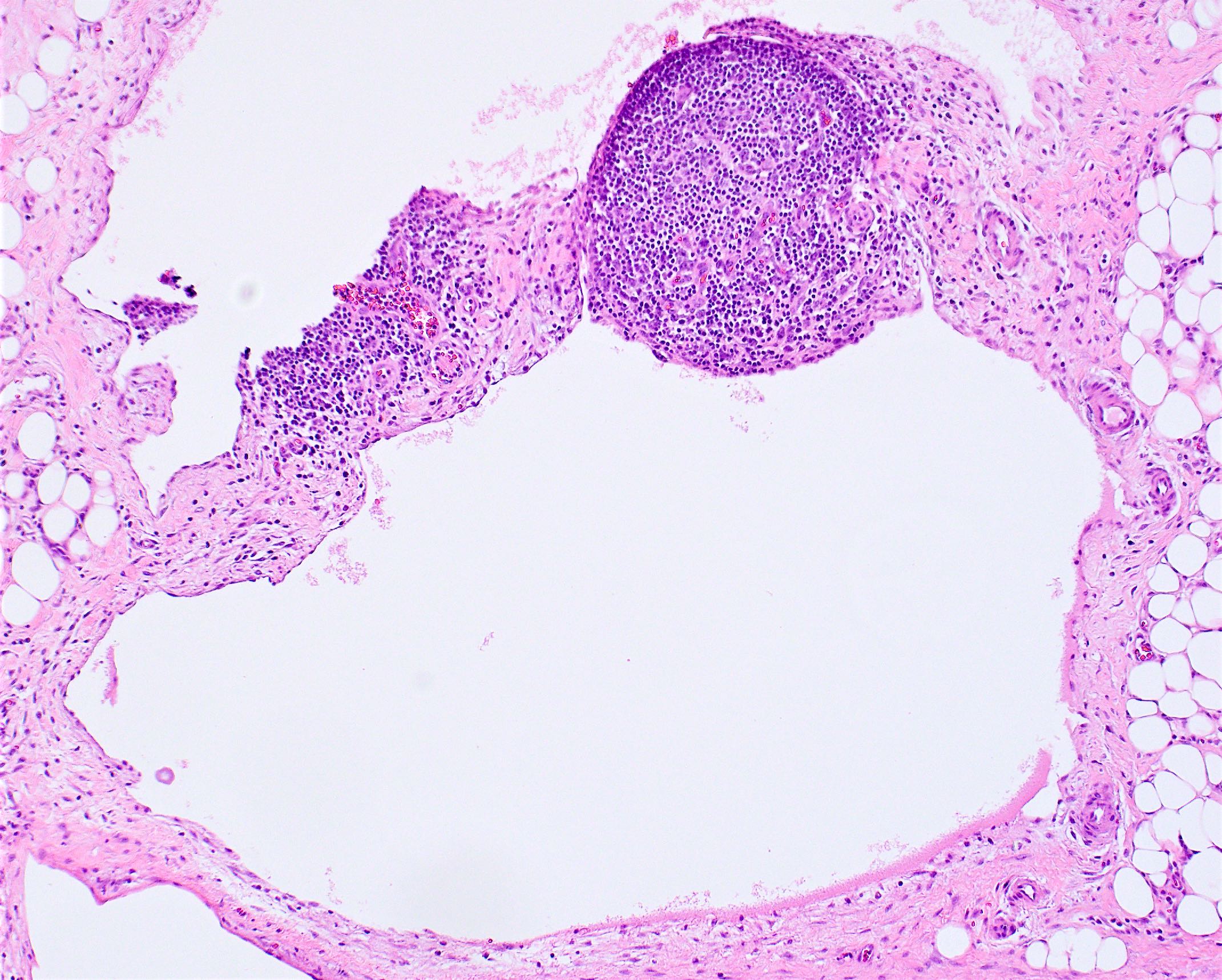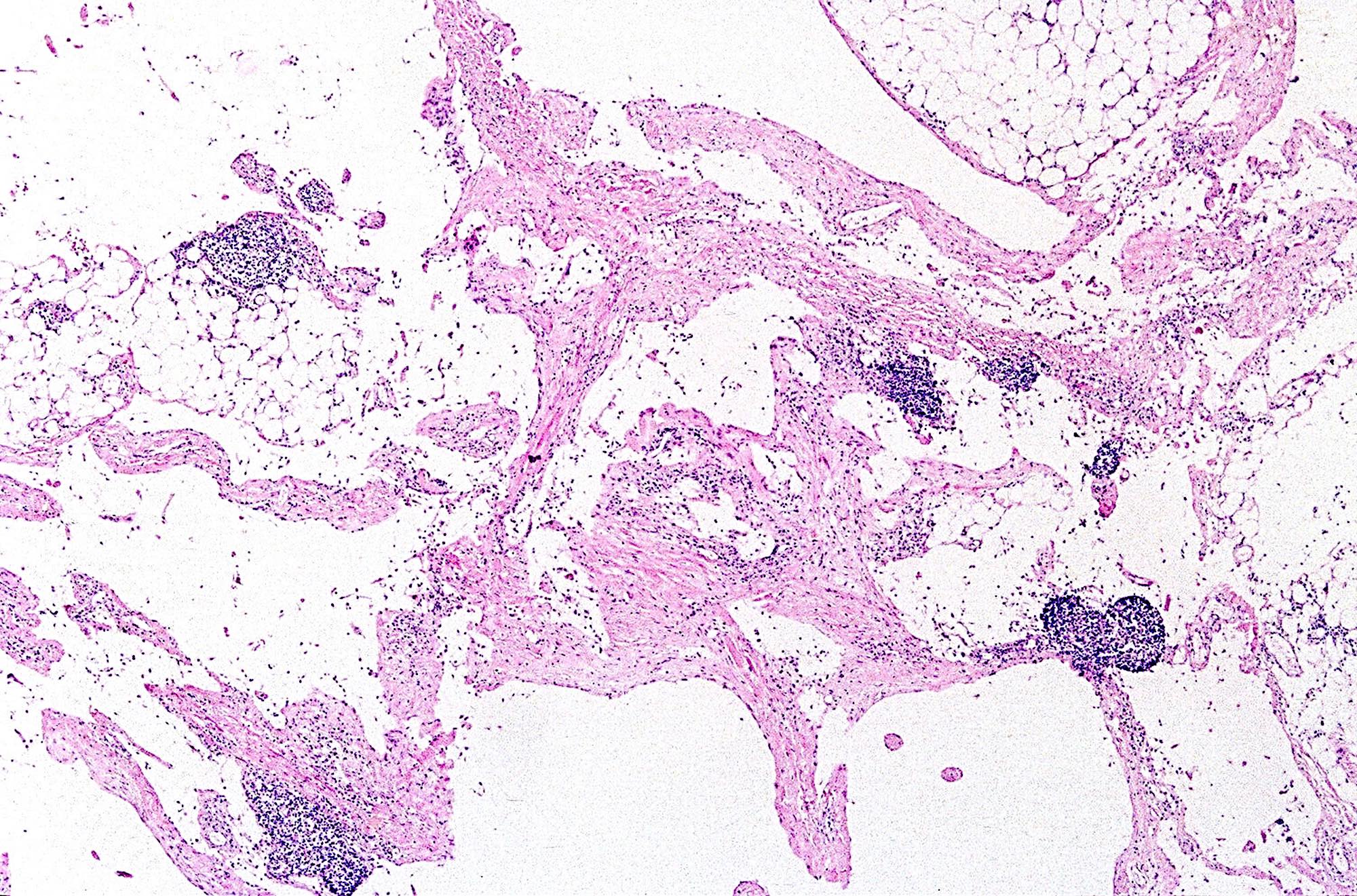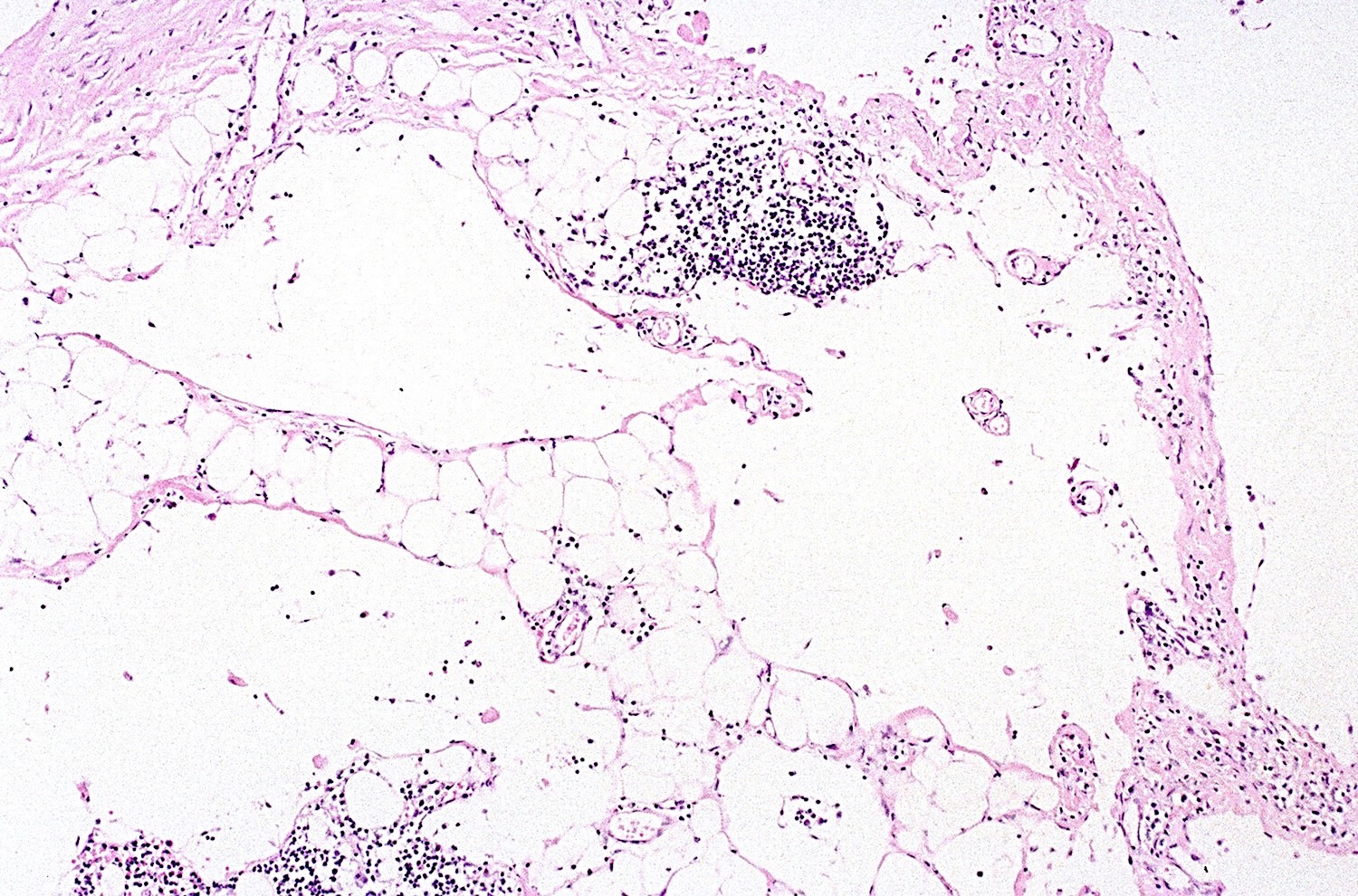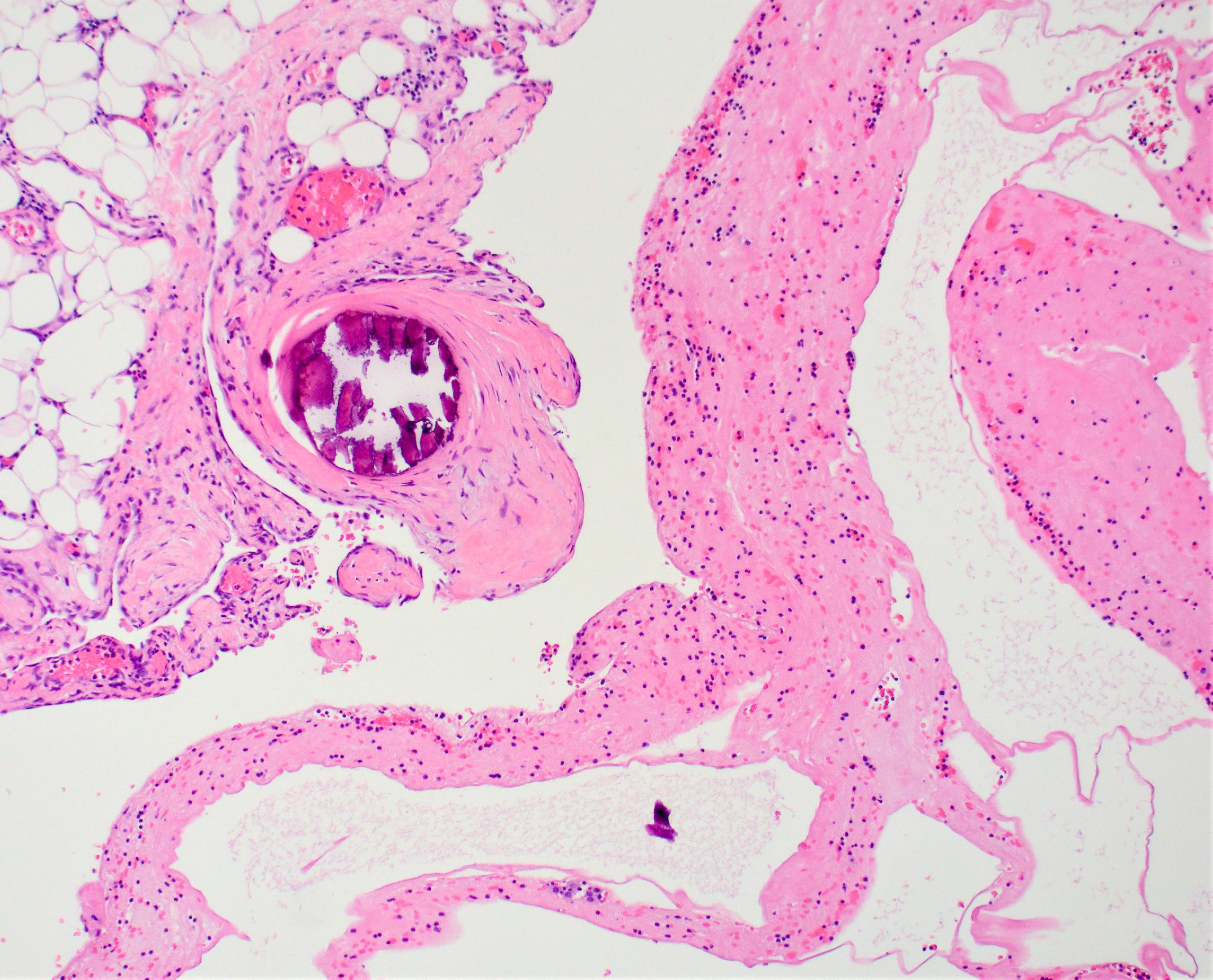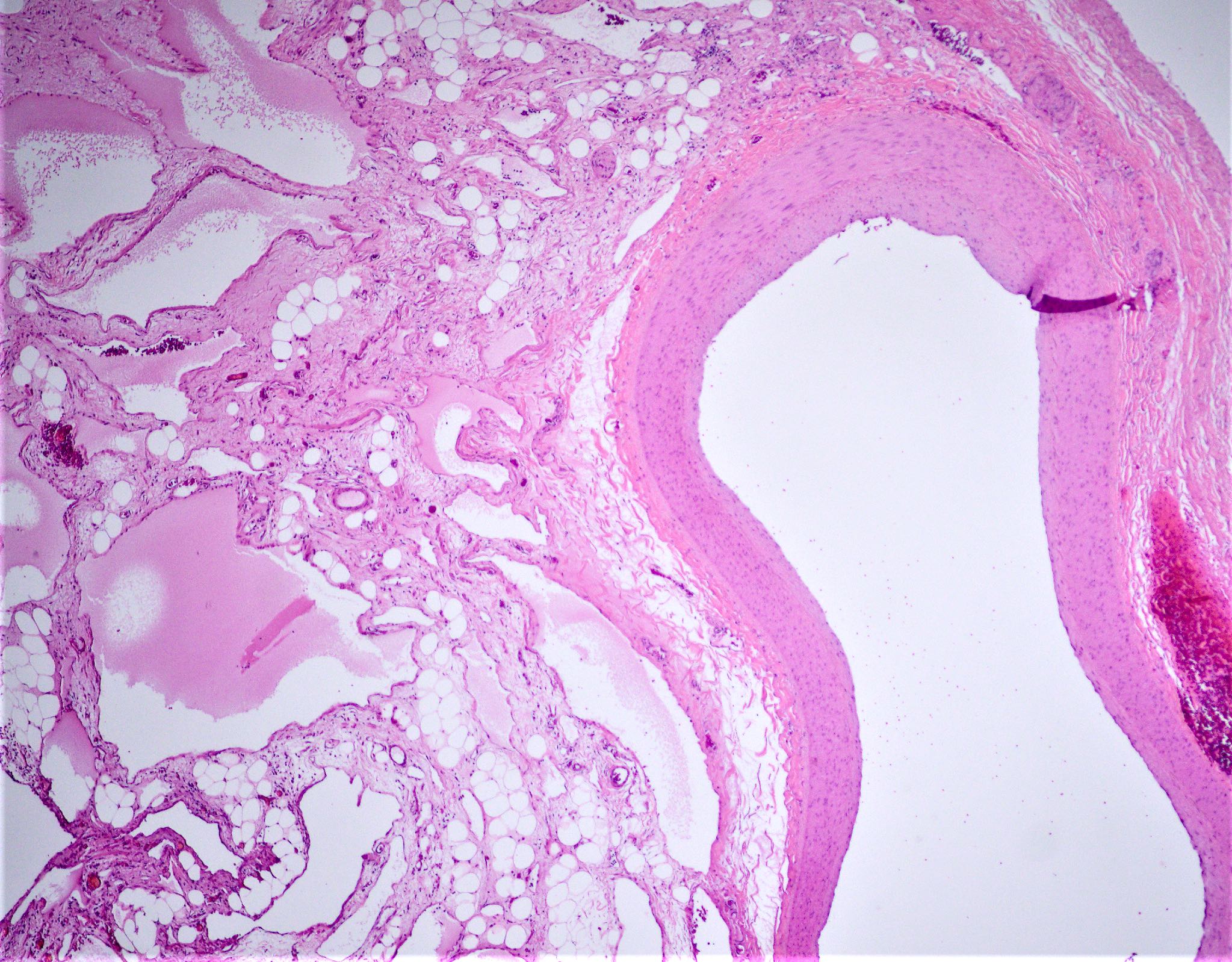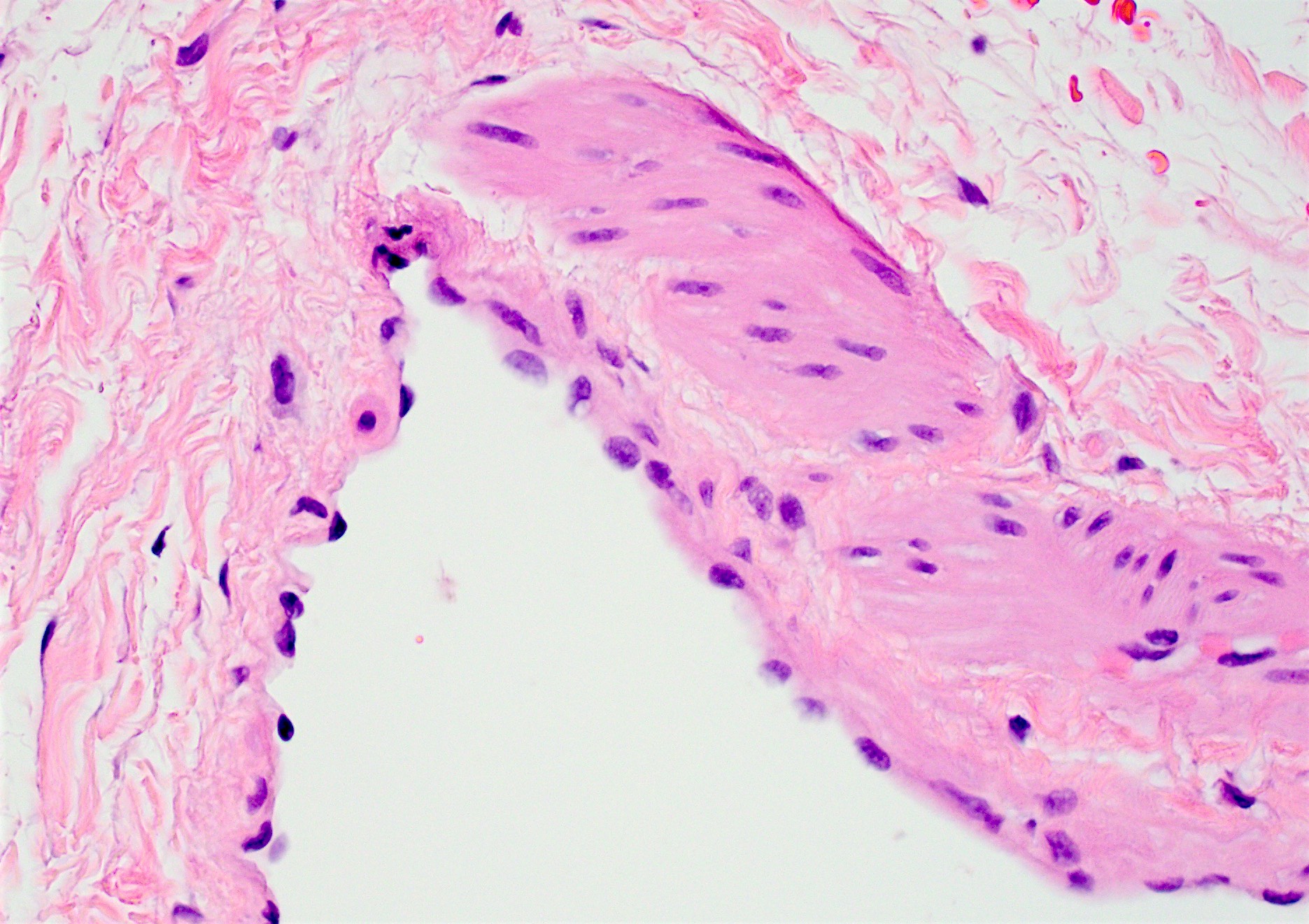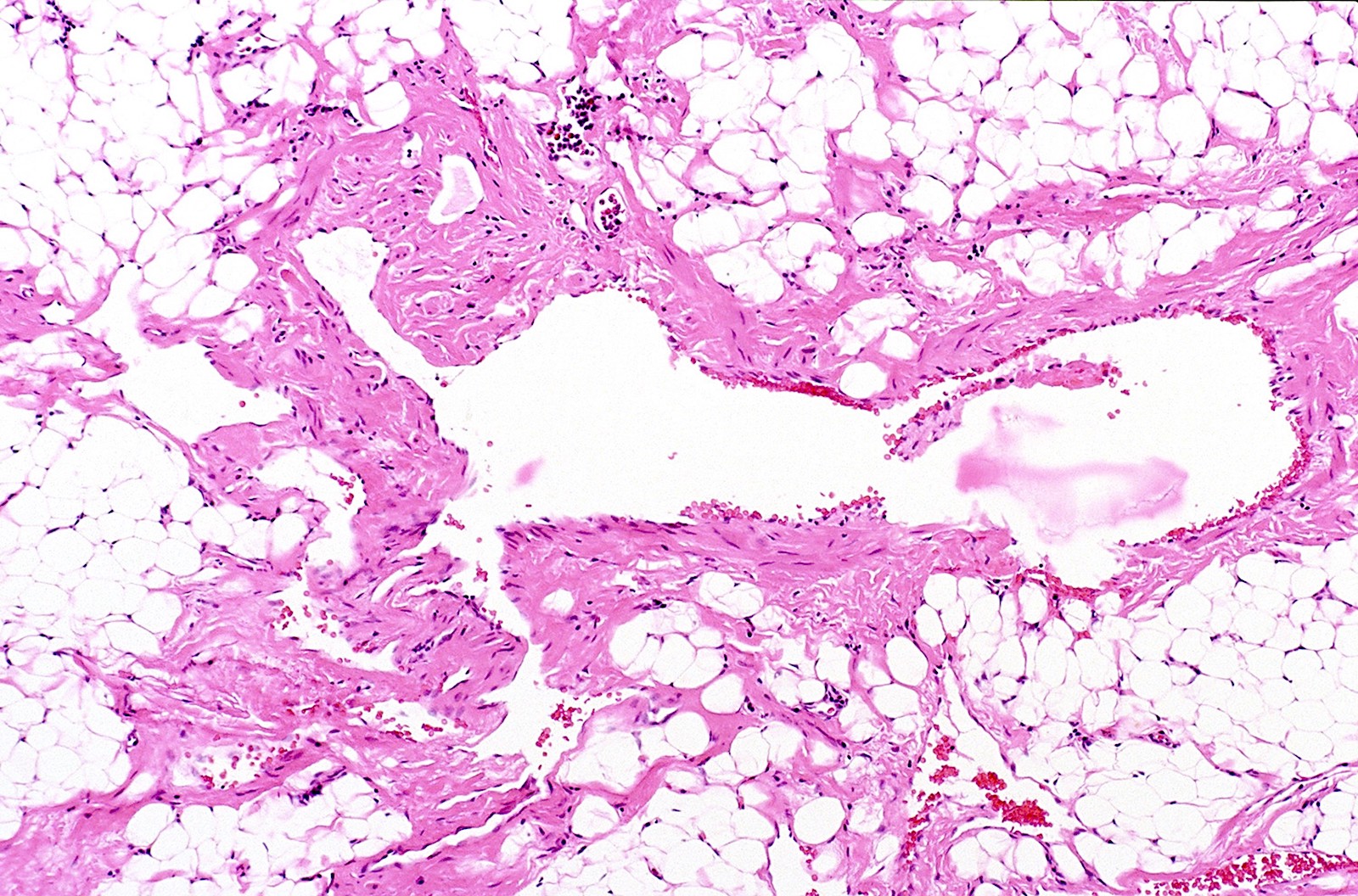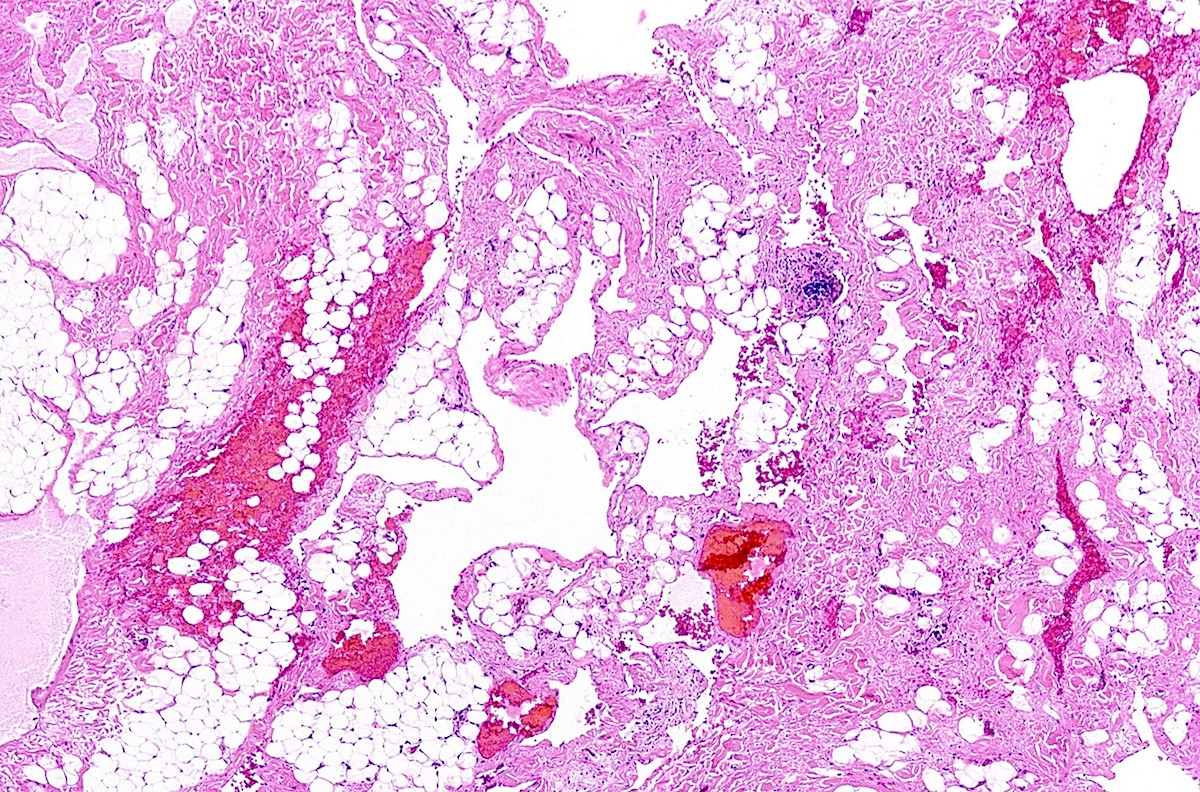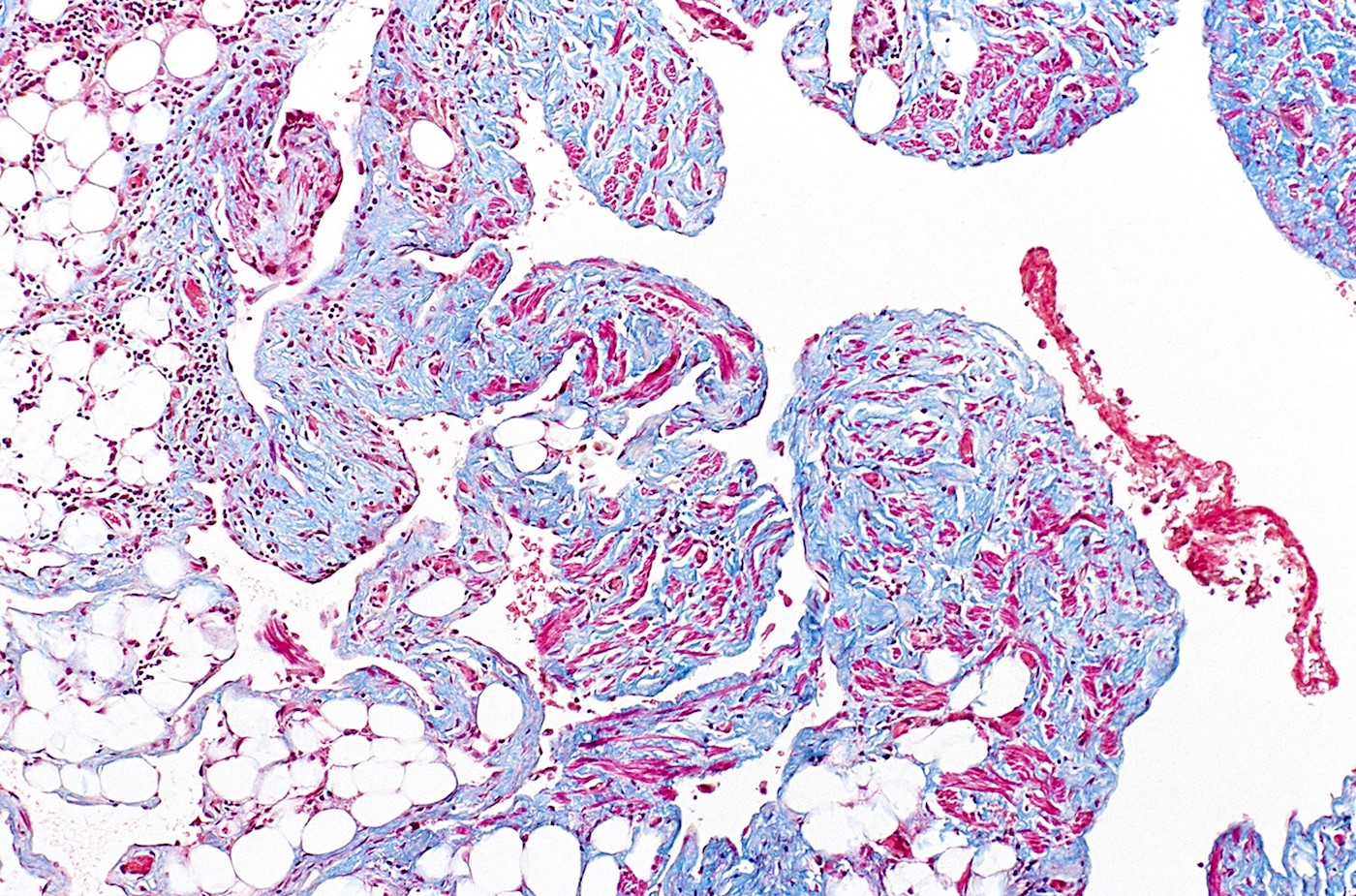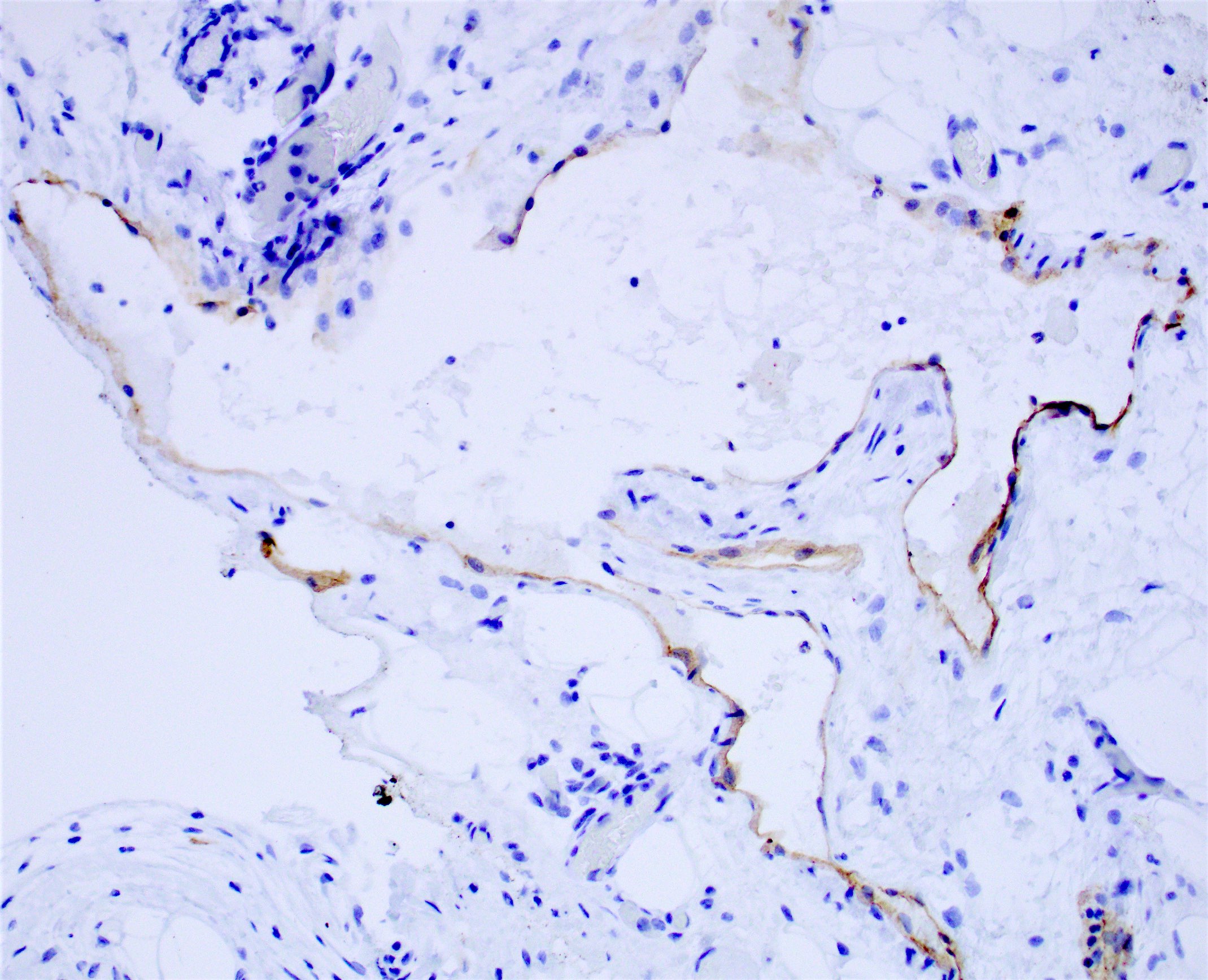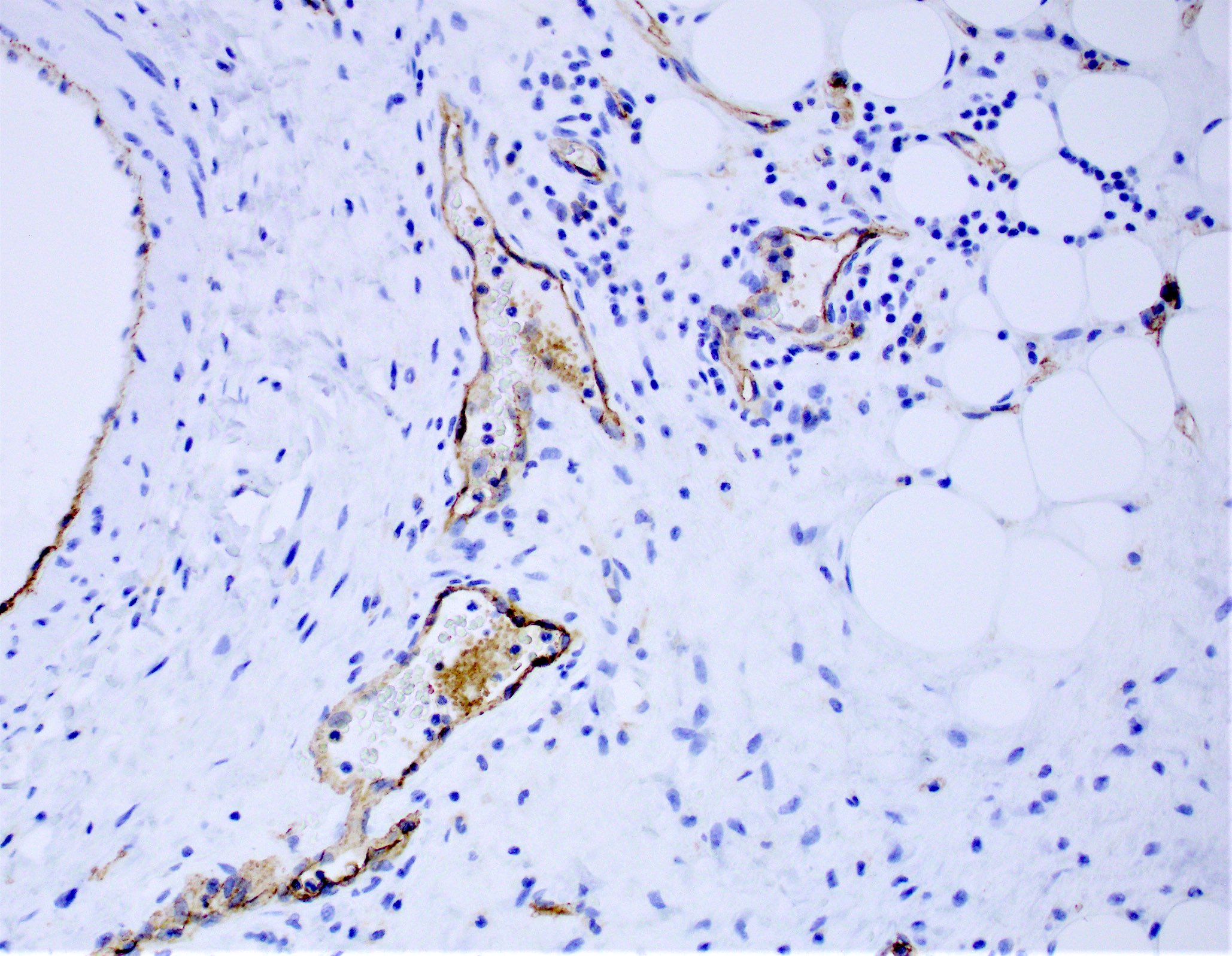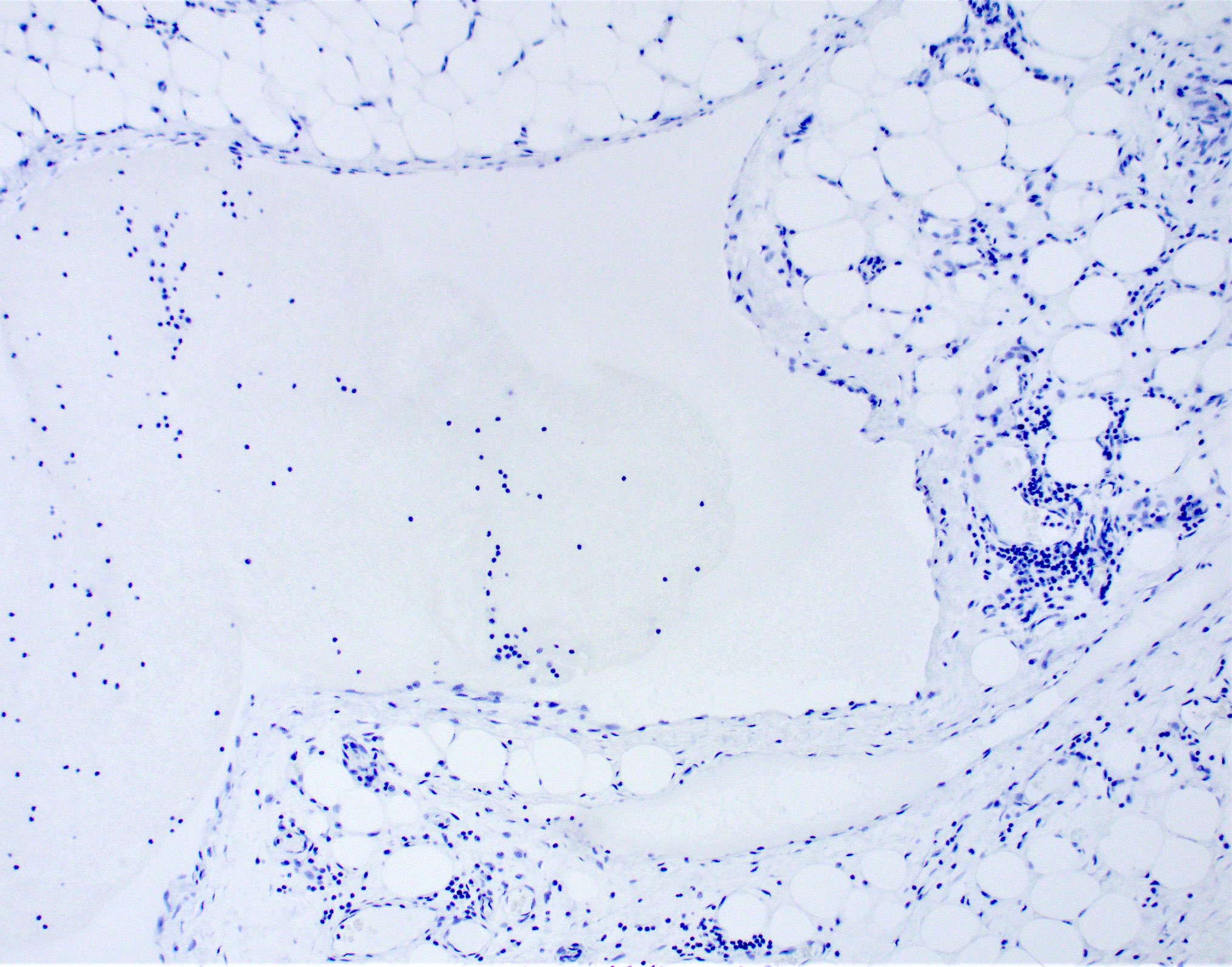Table of Contents
Definition / general | Essential features | Terminology | ICD coding | Epidemiology | Sites | Pathophysiology | Etiology | Clinical features | Diagnosis | Radiology description | Radiology images | Prognostic factors | Case reports | Treatment | Clinical images | Gross description | Gross images | Microscopic (histologic) description | Microscopic (histologic) images | Virtual slides | Positive stains | Negative stains | Electron microscopy description | Molecular / cytogenetics description | Videos | Sample pathology report | Differential diagnosis | Additional references | Board review style question #1 | Board review style answer #1 | Board review style question #2 | Board review style answer #2Cite this page: Warmke L, Meis J. Cystic / cavernous lymphangioma. PathologyOutlines.com website. https://www.pathologyoutlines.com/topic/softtissuelymphangiomacystic.html. Accessed April 19th, 2024.
Definition / general
- Benign vascular lesion composed of a collection of dilated lymphatic channels that may be superficial, deep or diffusely involve organ systems
- First described by Rodender in 1828 (Arch Pathol Lab Med 2015;139:278)
Essential features
- Benign proliferation of lymphatic vessels
- Immunohistochemical expression of CD31 and D2-40
Terminology
- Lymphatic malformation
- Lymphangioma circumscriptum (superficial cutaneous lymphangioma)
- Cavernous lymphangioma (deep lymphangioma)
- Cystic hygroma (cystic lymphangioma)
- Intra-abdominal cystic lymphangioma
- Hemangiolymphangioma
- Lymphangiomatosis (generalized lymphangioma, systemic angiomatosis)
ICD coding
- ICD-O:
- ICD-11:
- LA90.12 & XH9MR8 - lymphatic malformations of certain specified sites & lymphangioma, NOS
- 2E81.10 - disseminated lymphangiomatosis
Epidemiology
- Primarily occurs in children and young adults
- Majority presents at birth or within first couple of years (~90%) (J Pediatr Surg 1999;34:1164)
- Intra-abdominal lesions have a slight male predominance
- Cystic hygroma may occur in association with Turner syndrome (Hum Pathol 1984;15:61)
- Splenic lymphangiomas may occur with Klippel-Trenaunay syndrome (J Vasc Surg 2006;43:848)
- Associated with variant of Maffucci syndrome (J Pediatr Orthop B 2003;12:147)
- Associated with trisomies 13, 18 and 21 and other genetic syndromes (e.g., Noonan)
- Rare cases can occur in older adults, often mesenteric lesions (Arch Surg 1985;120:1266, Pathol Oncol Res 2000;6:146, BMJ Case Rep 2011;2011:bcr0320114022)
Sites
- Superficial lesions frequently involve the skin of proximal extremities / limb girdles (Br J Dermatol 1976;94:473)
- Deep lesions frequently involve the head and neck (primarily tongue and floor of mouth), followed by the extremities, axilla, groin and abdominal region (J Pediatr Surg 1999;34:1164, Virchows Arch 2008;453:1, Hum Pathol 2005;36:426)
- Cystic hygroma commonly involves head and neck, usually posterior triangle of neck
- Intra-abdominal lesions involve mesentery, omentum and retroperitoneum
- Lymphangiomatosis can involve multiple sites (e.g., liver, lungs and bone) (Am J Surg Pathol 1995;19:125, J Bone Joint Surg Am 2005;87:162, J Pediatr Hematol Oncol 2004;26:136)
Pathophysiology
- Arises from abnormal lymphatic system development
- PIK3CA and other mutations thought to drive the process through endothelial growth receptor pathways (J Pediatr 2015;166:1048, Int J Clin Exp Pathol 2015;8:5924)
Etiology
- Early or congenital lesions are favored to be developmental malformations
- Sequestered lymphatics fail to communicate with normal lymphovascular system
- Most are considered to be malformations / hamartomas (not true neoplasms)
- Genetic abnormalities play a role (Virchows Arch 2008;453:1)
Clinical features
- Superficial lesions may present as multiple small, grouped vesicular lesions involving the skin
- Tongue lesions present as a mass surfaced by pebbly, vesicle-like nodules said to resemble frog eggs (Head Neck Pathol 2020;14:512)
- Cystic hygroma usually presents as a unilateral, diffuse, nonpulsatile, painless swelling of the posterior cervical triangle
- Deeper lesions may present as a large, slow growing painless mass
- Intra-abdominal lesions can displace organs and cause intestinal obstruction
Diagnosis
- Swollen soft tissue mass with positive transillumination test
- Ultrasound can confirm cystic or multicystic lesion
- Diagnosing these lesions may be very challenging in small biopsies given their cystic nature and bland cytologic features
Radiology description
- Xray:
- Abdominal lesions commonly present as a soft tissue mass with displacement of bowel loops (Pediatr Radiol 2002;32:88)
- Ultrasound:
- Unilocular or multilocular anechoic mass
- Sharply defined cystic of multicystic mass with internal septations
- May be diagnosed on prenatal ultrasound (Prenat Diagn 1988;8:405)
- CT findings:
- Nonenhancing cystic lesions
- Septated cystic mass of variable size (Pediatr Radiol 2002;32:88)
- Contains fluid of homogeneous density
- May displace adjacent organs
- MRI findings:
- T1 weighted image may be hypointense or hyperintense when filled with hemorrhage or proteinaceous material (Magn Reson Imaging 2003;21:81)
- T2 weighted image shows a multiloculated mass with hyperintense areas
Radiology images
Contributed by Jeanne Meis, M.D.
Images hosted on other servers:
Prognostic factors
- Benign lesions with excellent prognosis
- Recurrence is high with incomplete removal
- When involving deeper tissue planes, lesions can recur in up to 20% of patients (J Pediatr Surg 1992;27:220)
- Complications include infection, hemorrhage, rupture and intestinal obstruction
- Diffuse lymphangiomatosis with mediastinal or visceral organ involvement can be fatal
- No malignant transformation has been reported
Case reports
- 13 year old boy with cystic hygroma of the neck (Rom J Morphol Embryol 2021;62:845)
- 24 year old woman with lymphangioma of the dorsal tongue (Head Neck Pathol 2020;14:512)
- 34 year old woman with jejunal cavernous lymphangioma (BMJ Case Rep 2011;2011:bcr0320114022)
Treatment
- Surgical resection may be indicated for large, symptomatic lesions
- Intralesional injection of sclerosing agents, including bleomycin and OK-432
- Radiofrequency ablation (Int J Pediatr Otorhinolaryngol 2008;72:953)
Clinical images
Contributed by Jeanne Meis, M.D.
Images hosted on other servers:
Gross description
- Multicystic and spongy lesions
- Reddish / brown translucent cystic mass
- Cystic spaces often contain watery, thick or milky fluid (Hum Pathol 2005;36:426)
Gross images
Microscopic (histologic) description
- Variably sized, thin walled, dilated lymphatic vessels lined by flattened endothelium
- Frequently surrounded by lymphoid aggregates, sometimes with reactive germinal centers
- Lumina may contain eosinophilic and amorphous proteinaceous fluid with occasional lipid laden macrophages and lymphocytes
- Longstanding lesions may show interstitial fibrosis
- Walls of larger vessels may contain smooth muscle
- Stromal mast cells and hemosiderin deposits are frequently seen
- Lining of the cysts may rarely form papillary projections
- Lymphangiomatosis frequently shows an anastomosing growth pattern, dissecting around normal structures
- Extensive granulation tissue and inflammation may obscure lymphatic nature (Hum Pathol 2005;36:426)
Microscopic (histologic) images
Contributed by Laura Warmke, M.D. and Jeanne Meis, M.D.
Virtual slides
Positive stains
- Podoplanin (D2-40)
- PROX1 (Am J Surg Pathol 2012;36:351)
- Vascular endothelial growth factor receptor 3 (VEGFR3)
- Lymphatic endothelial hyaluron receptor 1 (LYVE1)
- CD31 and FVIII variable
- CD34 variable (Hum Pathol 2005;36:426)
- SMA positive in smooth muscle in larger vessels
Electron microscopy description
- May assist in determining endothelial origin of cells lining the cysts
- Presence of Weibel-Palade bodies, storage granules of endothelial cells
Molecular / cytogenetics description
- Increased expression of VEGFR3 (Virchows Arch 2008;453:1)
- Mutations in VEGFR3, FLT4, PROX1, FOXC2 and SOX18 may play a role
- Somatic mutations in PIK3CA have been reported (J Pediatr 2015;166:1048)
Videos
Lymphangioma (cystic hygroma)
Sample pathology report
- Soft tissue, retroperitoneal mass, resection:
- Cavernous lymphangioma (see comment)
- Comment: Sections show a lesion composed of dilated lymphatic spaces lined by flattened endothelium without cytologic atypia. Immunohistochemical stains show that the endothelial cells are positive for D2-40 and CD31, supporting a lymphatic nature, while they are negative for cytokeratin. These results, along with the morphologic features, support the above diagnosis.
Differential diagnosis
- Hemangioma:
- Well circumscribed lesion
- Smaller vascular spaces extensively filled with red blood cells
- Vascular malformation:
- Often compressible
- May demonstrate a thrill or bruit
- Atypical vascular lesion:
- Radiation associated
- Frequently occurs in the breast
- Dilated vascular spaces with atypical endothelial cells
- Acquired progressive lymphangioma:
- Cutaneous vascular neoplasm
- Vessels dissect between collagen fibers
- Slow growing reddish brown patch or plaque
- Secondary lymphangiectasia:
- Secondary to lymphatic obstruction
- May be due to tumor, scarring or radiation
- Clinical history is helpful
- Cystic lymphangioma-like adenomatoid tumor (Adv Anat Pathol 2009;16:424):
- Mesothelial in origin
- Positive for cytokeratin and calretinin
- Ultrastructural finding of abundant long, slender microvilli
- Parasitic cyst (echinococcal cyst):
- No true epithelial / endothelial / mesothelial lining
- Protoscolices and refractile hooklets are often present
- Serologic test for Echinococcus are frequently positive
- Mesothelial cyst:
- Positive for cytokeratin and calretinin
- Negative for CD31
Additional references
Board review style question #1
Board review style answer #1
Board review style question #2
Board review style answer #2





